Gigabyte MU70-SU0 (Intel C612) Server Motherboard Review
Bohs Hansen / 9 years ago
Introduction, Specifications, and Packaging
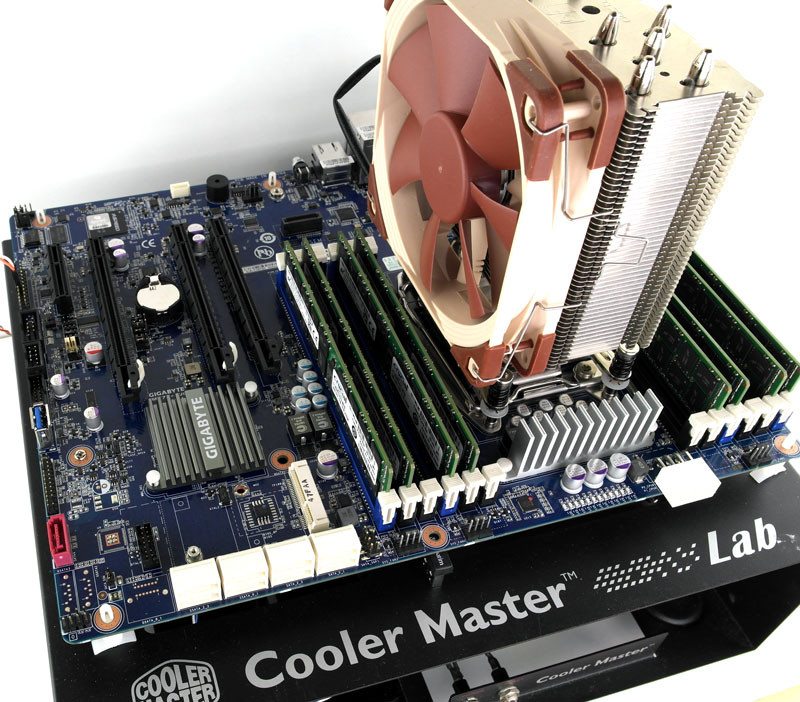
Intel’s C612 chipset brought along a lot of improvements for the workstation and server platform, not just support for Haswell-EP Xeon E5 processors, but also DDR4 memory support at full speed. Today I’m taking a look at one of Gigabyte’s many great server solutions and while most people aren’t that familiar with Gigabyte’s server-side of things, I can assure you that it is a quite impressive line-up. This is the first time we’ve taken a look at a server motherboard, and while we’ve analysed workstation type boards, you will see us opening up our site to a lot more content revolving around servers, their components and everything in between. With that in mind, I’m pleased to start our new server motherboard review section off with a feature packed, small but mighty motherboard from Gigabyte; the MU70-SU0.
Specifications
The specifications are taken directly from the manufacturers homepage and are as such subject to change in possible future revisions.

Key Features
There is always something that sets each and every motherboard apart for the rest, sometimes it’s in features and other times it is the software. On this motherboard, it is most likely the 12 RAM slots that you can run at full speed at the same time.
- Intel Xeon processor E5-1600 V3 & E5-2600 V3 product families
- 12 x RDIMM/LRDIMM ECC DDR4 DIMM slots
- 4 x GbE LAN port (Intel I210)
- 9 x SATA III 6Gb/s
- 1 x mSATA slot
- 1 x USB 3.0 + 1 x USB 2.0 headers
- 1 x internal USB 3.0 port
- Aspeed AST2400 remote management controller
Packaging and Accessories
The box follows a very simple design and is perfect for the market it’s aimed at. There is no need for fancy artwork like we’re used to on consumer motherboards.
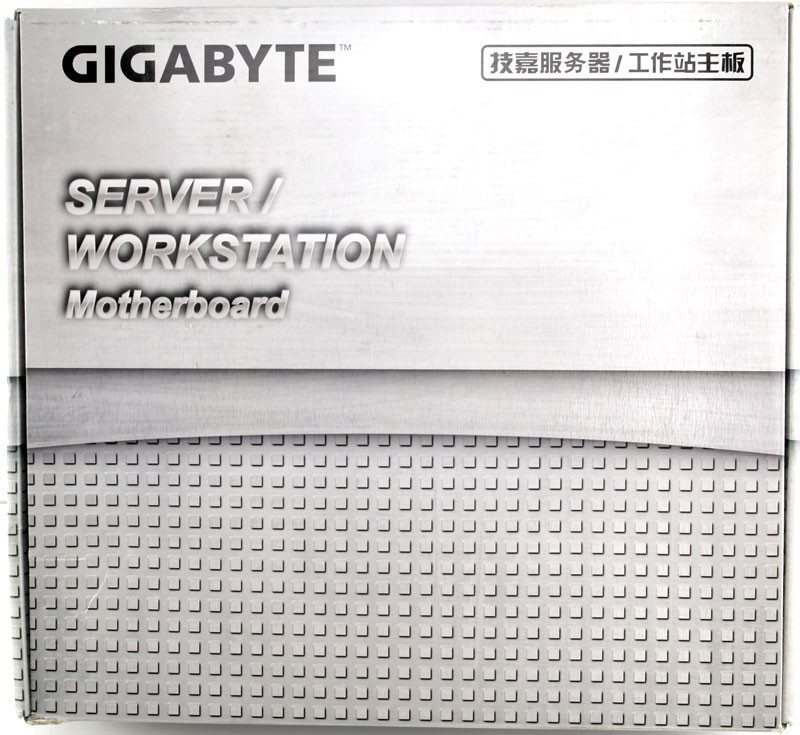
The rear of the box gives a little detail about 3 key points that are important to a board of this caliber including reliability, availability, and serviceability. These are all major factors for any IT admin needing a reliable product with quality components that is easy to set up and maintain.
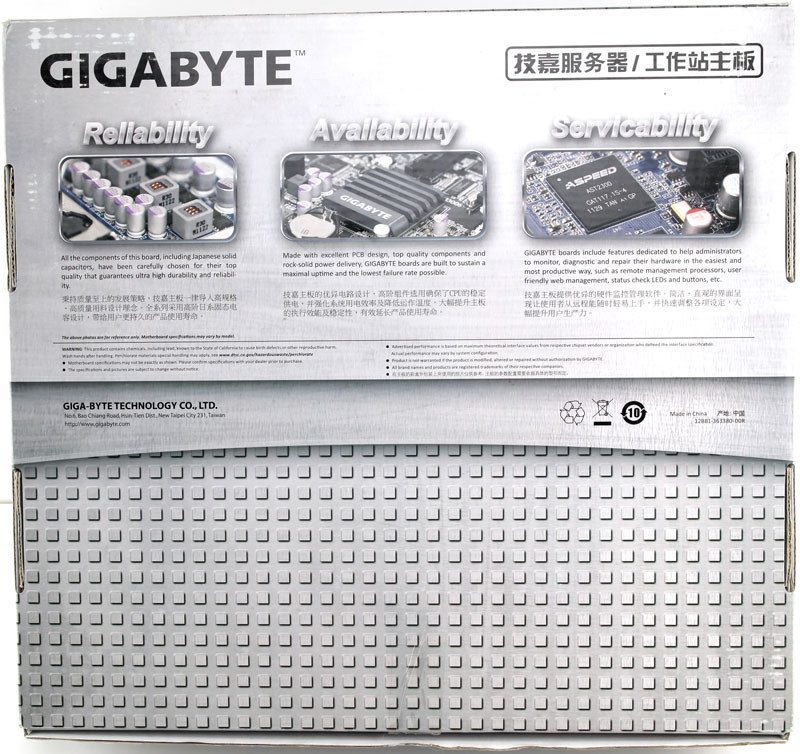
A Closer Look & Layout Analysis
The previous Intel server platforms had one major problem caused by its design where the maximum supported memory frequency was downgraded when more DIMMs were added to the motherboard. This resulted in people having to make the decision between pure performance and the amount of memory installed and it proved troublesome for some memory-hungry applications.
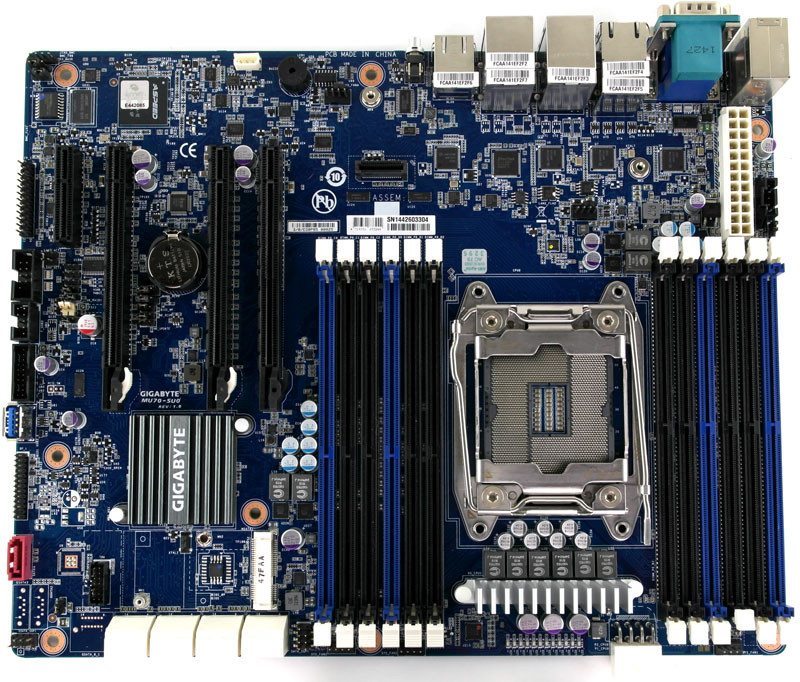
Gigabyte offers a unique solution as all of their motherboards that are based on the LGA 2011-3 socket support a maximum frequency of 2133 MHz by default in any memory configuration, even when all the memory banks are fully loaded.
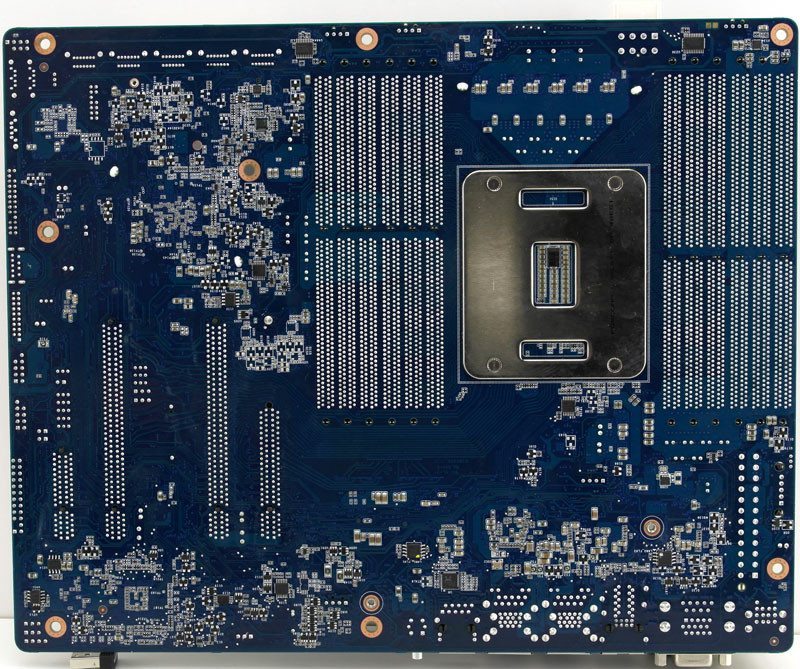
The MU70-SU0 comes with 12 DIMM slots, which is quite uncommon in the ATX form factor and best of all is that we can run all slots on their maximum speed of 2133MHz. That means that we can effectively run this motherboard with up to 768GB DDR4 memory at that speed, making this board an ideal platform for any server that runs memory-intensive applications.
There is support for quad-channel memory setups with ECC RDIMM and LRDIMM modules. You can use single and dual rank RDIMM modules up to 32GB and quad rank LRDIMM modules up to 64GB. When it comes to speed, you got the options between 1600, 1866, and 2133MHz 1.2V modules.
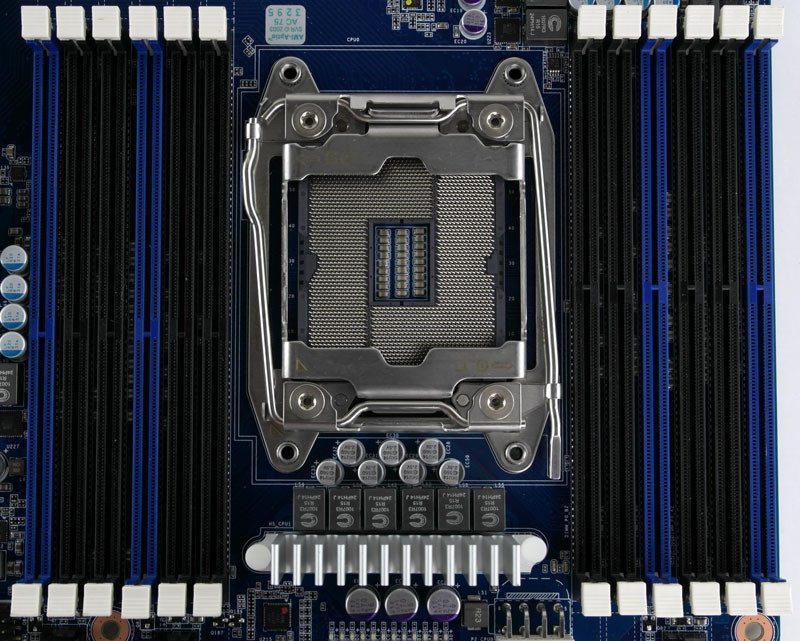
This is a single CPU motherboard and the LGA 2011-3 socket supports Intel Xeon E5-2600 V3 and E5-1600 V3 processors. Due to the amount of DIMM slots on this motherboard, the area to mount CPU cooler is very narrow and not all coolers will fit and you should remember to double-check this when you plan your build. Gigabyte list the supported coolers on their specification page here.
The new Haswell-E platform brought a whole new set of performance enhancing features including a boost in frequency and more cores, but also encryption performance overhead reduction features and technologies improving run time and migration VM integrity.
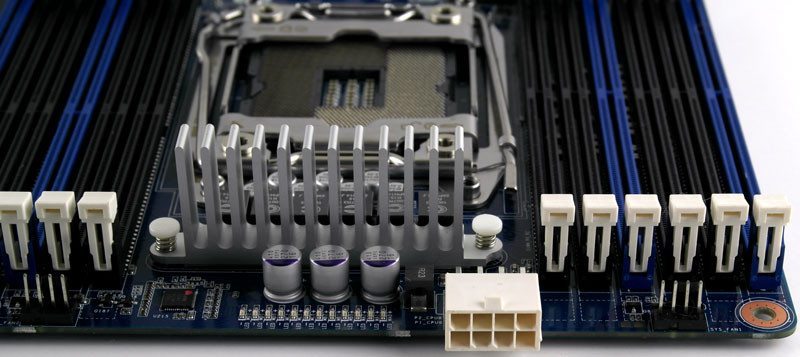
The Intel C612 chipset provides a whole lot of features including two PCIe Gen3 x16 slots, one PCIe Gen3 x16 slot on x8 speed, and one PCIe Gen2 x4 at x2 speed. There’s also the cleverly designed PCIe x4 mezzanine card slot that shares its bandwidth with the x8 speed PCIe Gen3 slot. If used, that speed will be cut in half to x4 bus speed.
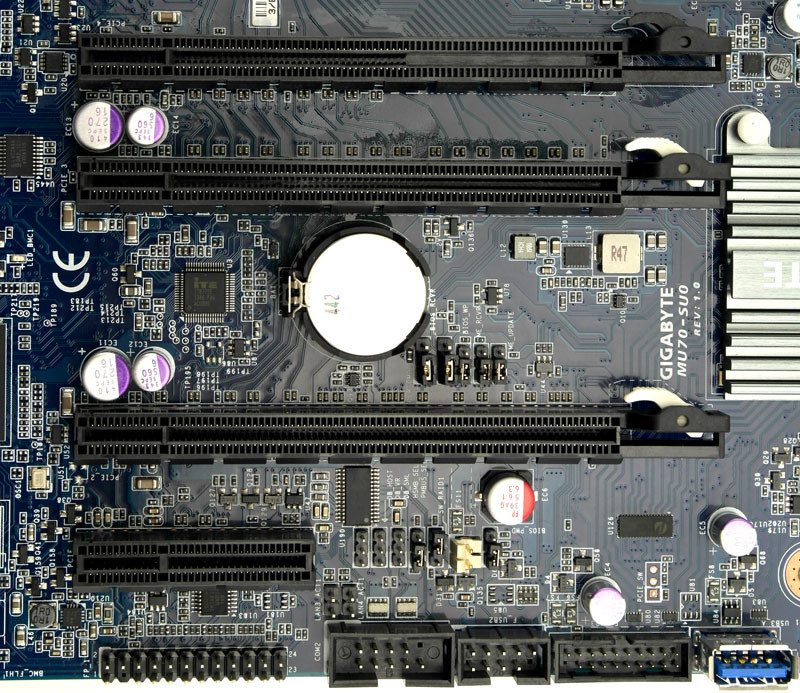
The mezzanine slot is a cleverly designed slot that allows you to expand the motherboard with two additional network connections besides the already present abundance. While the onboard connectors are RJ45 GbE ports, the two extra ports that can be added via the mezzanine slot are 10GbE SFP+ ports.
All of the performance that can be added to this board has to be connected to the world somehow and Gigabyte have added four GbE LAN ports powered by Intel I210 chip as well as an RJ45 remote management port connected to the Aspeed AST2400 chip.
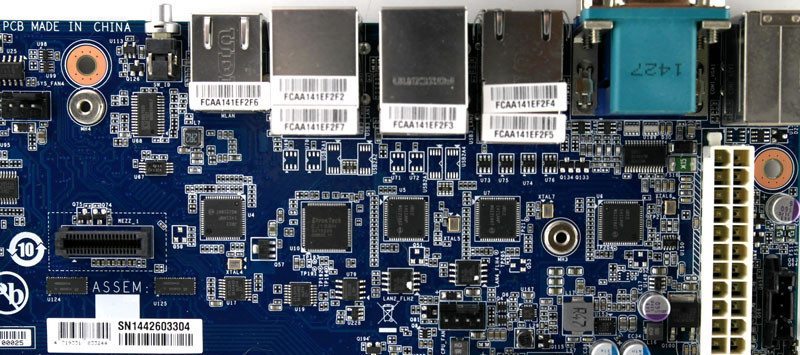
The Aspeed AST2400 doesn’t just provide this motherboard with a built-in GPU solution that can display 2D video in a resolution up to 1920×1200 pixels at 60Hz and with 32bpp, it also provides the above-mentioned remote management capabilities. It is basically a complete system on a chip and it adds a lot of extra benefits to a motherboard like this.
The Avocent MergePoint IPMI 2.0 web interface provides access to your network and security settings, user control, service settings, IPMI settings, session control, LDAP settings, power control, voltages, fans, and temperature monitoring as well as system event logs, event management, serial over LAN and vKVM & vMedia.
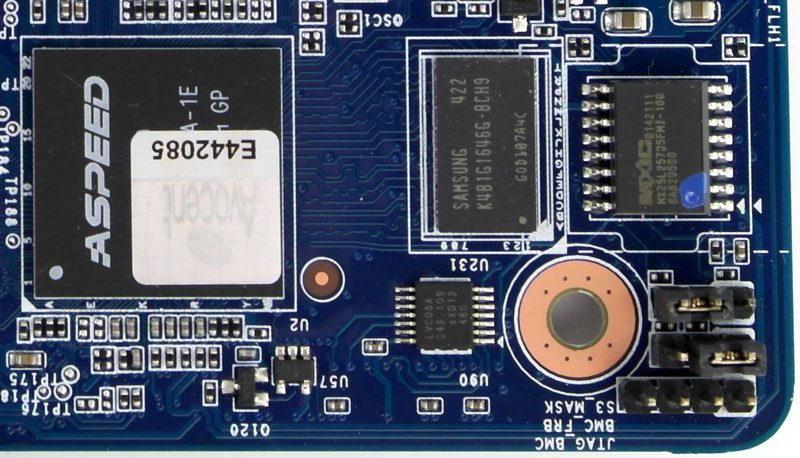
BIOS management can be troublesome at times, but not on the Gigabyte MU70-SU0 motherboard. Gigabyte has developed an integrated function that lets you update the BIOS of your motherboards without having a CPU, memory, or drives installed. You don’t even have to power the system on, but it does need to be connected to a PSU. You can upgrade one board at a time via the standard IPMI 2.0 web interface or multiple boards simultaneously via a command line.
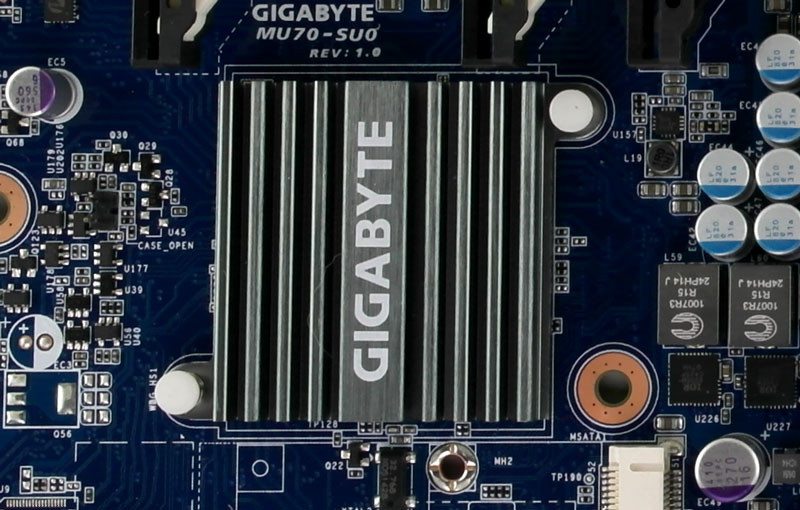
There are plenty of storage possibilities thanks to the 10 SATA3 channels that this chipset provides. On the MU70-SU0 we find eight SATA III 6Gb/s ports, one SATA III 6Gb/s port supporting SATA DOM, and one 1 x mSATA 6Gb/s slot. You can set up Intel SATA RAID where mode 0, 1, 5, and 10 are supported.
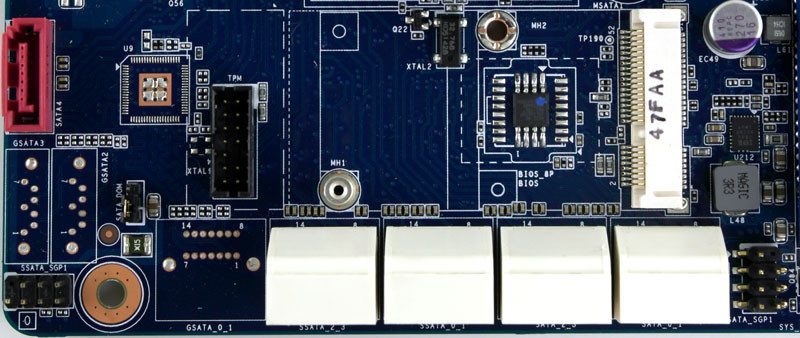
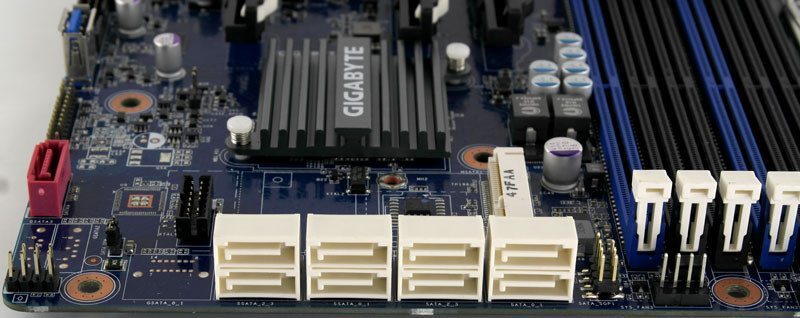
The rear I/O panel provides four USB 3.0 and two USB 2.0 ports as well as a dual-use PS/2 port. There’s an ID button with LED as well as the five RJ45 ports, a serial port, and a D-Sub VGA port.
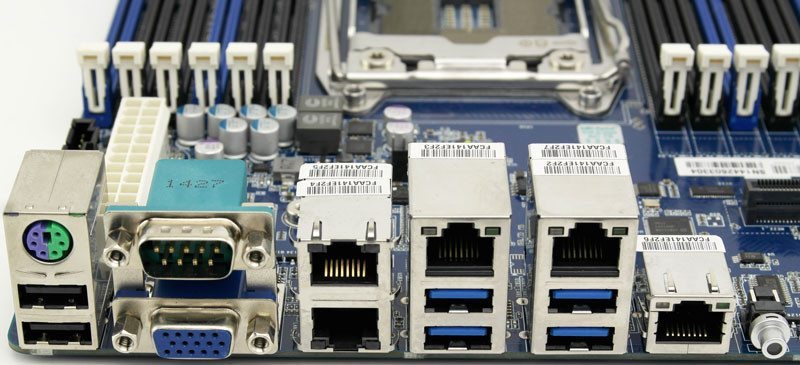
There are a lot more on-board connectors on the Gigabyte MU70-SU0 than the already mentioned. The motherboard gets its power from a 24-pin ATX main power connector and an 8-pin ATX 12V connector. There is one header for the CPU fan and four headers for system fans. You get one header for two USB 3.0 ports and one for two USB 2.0 ports, but the motherboard also includes an on-board vertical type A USB 3.0 connector.
One serial header, one PMBus connector, one IPMB connector, one TPM header, and a chassis intrusion header is found too and so is one JTAG header, two SATA SGPIO headers, and a HDD backplane board header.
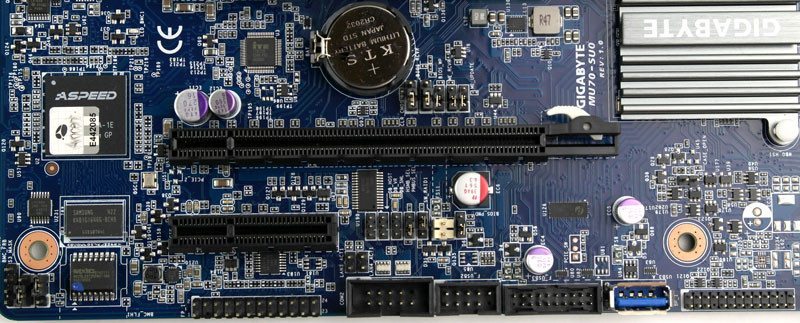
The DOM port supports direct and indirect power and you can also set it to non-DOM use via a jumper. Other jumpers to adjust the features include a PCIe switch, PMBus selection, Software RAID as well as Clear CMOS, BIOS recovery, ME recovery, and ME update jumpers.
This isn’t just a top-notch motherboard when we’re talking about the features, it is also a very well-built board that only uses the best of the best. We’ve seen the Intel LAN, chipsets, and sockets as well as the Aspeed based remote management, but that isn’t all. The board is also built with Japanese solid capacitors for the IR Digital CPU Power Design and otherwise too. Everything is picked to provide you with the best durability possible.
The Test System and Test Software
As we’re trying to branch out with more relevant reviews for all of our readers, we’ve started this new section with server grade motherboards and we’ve also begun reviewing workstation systems such as the Boston Venom 3401-7T.
To test a server grade motherboard like this, we want to stress every component of the system to check stability and performance. While the benchmarks in themselves test the actual connected components such as CPU and memory instead of the motherboard itself, the results will give us comparable figures allowing you as the reader to pick the best.
Since this is the first review in this section, we don’t have any other values to compare them too yet, but that will change as more products get their own reviews and the charts and graphs will be updated to reflect that.
To test a motherboard like this, we need a lot of extra components and we’ll be using the same each time. You can find a complete list of them below.

System components
- CPU: Intel Xeon E5-2695 v3
- RAM: Crucial DDR4 2133 MHz (8x 16GB)
- SSD: Micron M500DC 800GB System Drive
- PSU: be quiet! Dark Power Pro 11 1200W
- Case: CoolerMaster Lab Testbench
- Cooler: Noctua NH-U12DX i4
We use a wide variety of applications to gain a broad spectrum of results for comparing diverse aspects of the system performance.
Software
- Windows Server 2012 R2
- AIDA64 Engineer Edition
- Cinebench R11.5
- Cinebench R15.0
- Geekbench 3
- PCMark PerformanceTest 8.0
- SPECwpc
- SiSoftware Sandra
- SuperPi Mod 1.9 WP
- wPrime 2.10
BIOS
The BIOS on the Gigabyte MU70-SU0 is a legacy styled BIOS as you’d expect and most people prefer on a motherboard like this. You’ll want everything plain and simple, easy to find, and in a way that you’re used to.
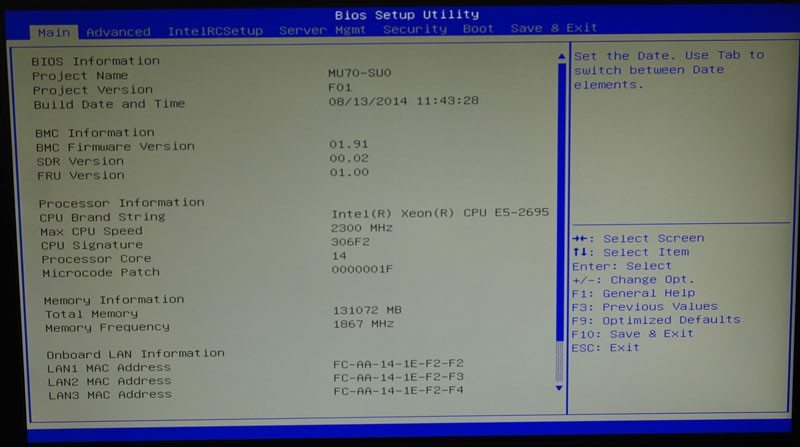
The photos are pretty much self-explanatory and show the features and settings available on this motherboard. There wasn’t a thing that I was looking for and couldn’t find.
Advanced Settings
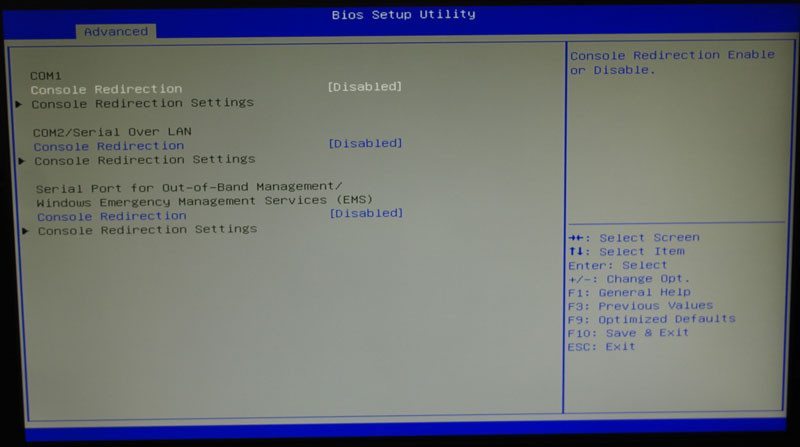
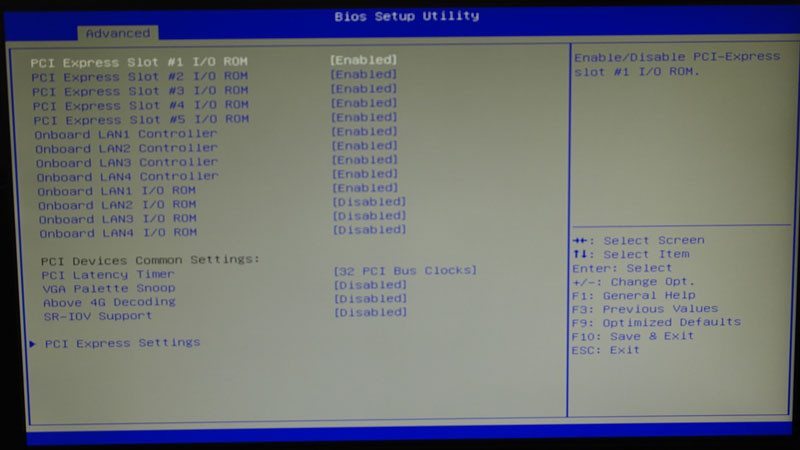
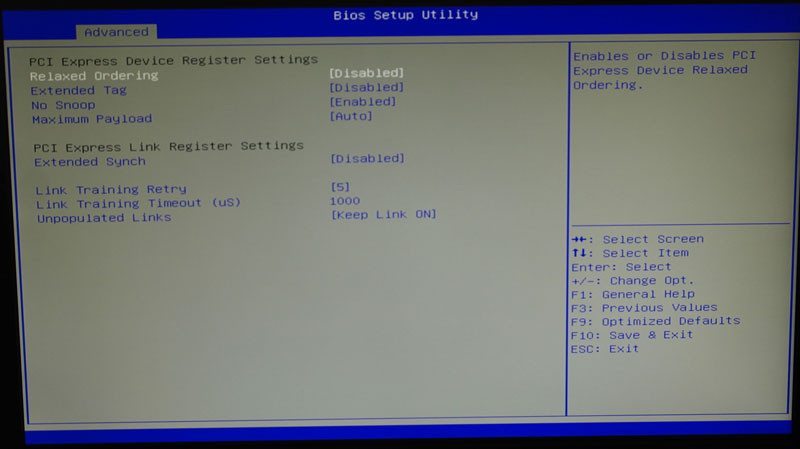
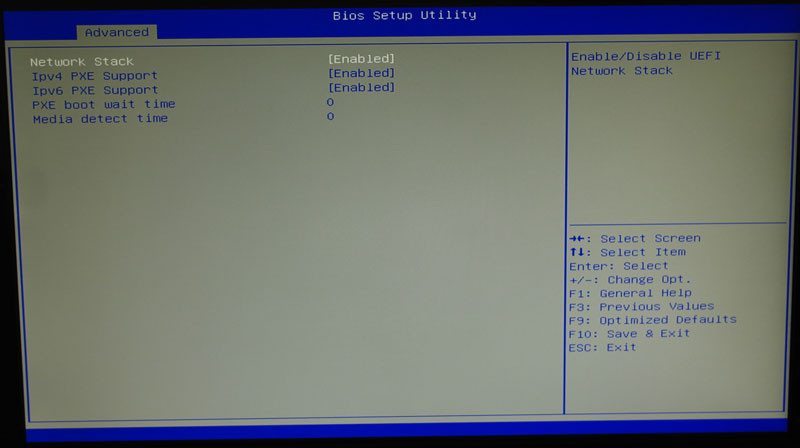
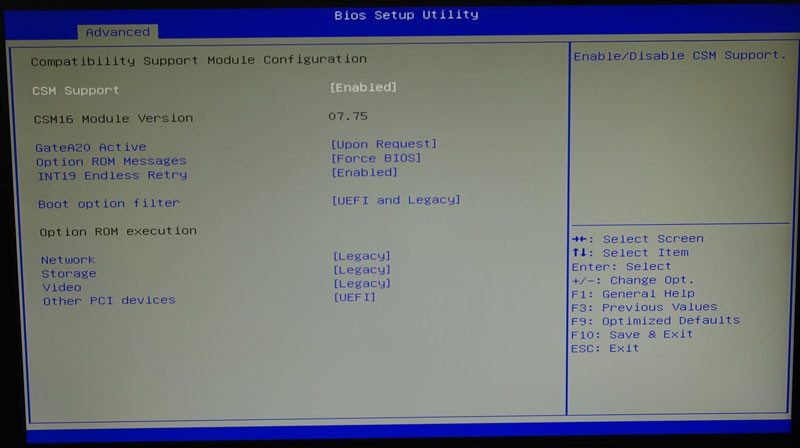
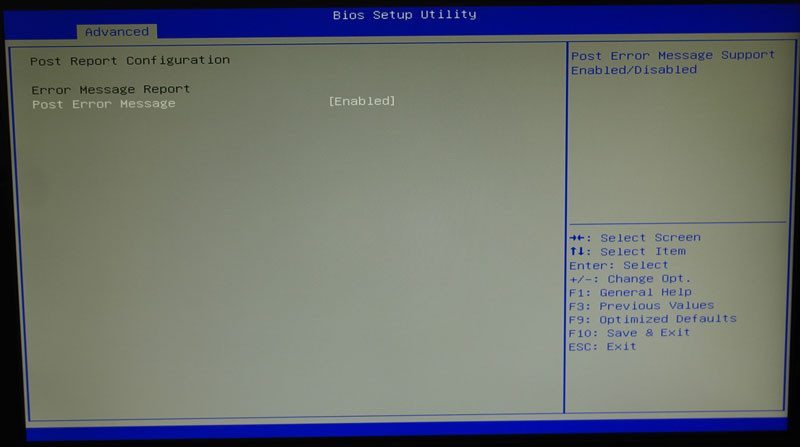
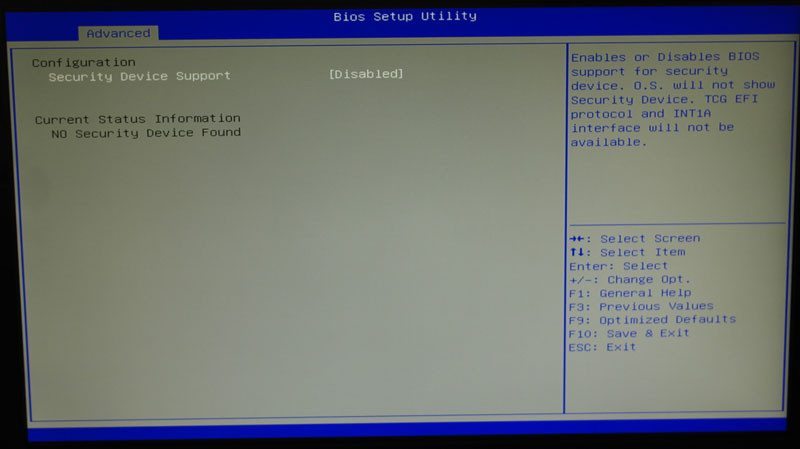
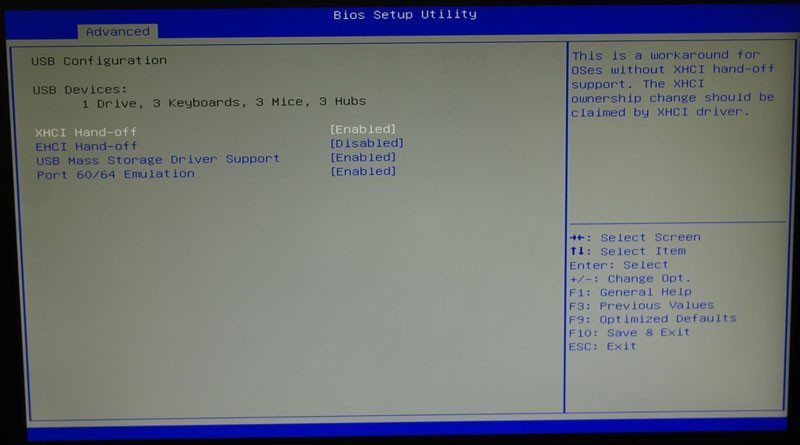
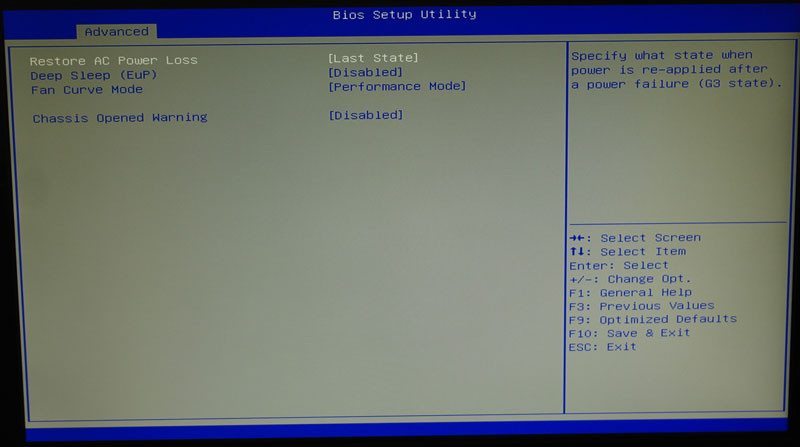
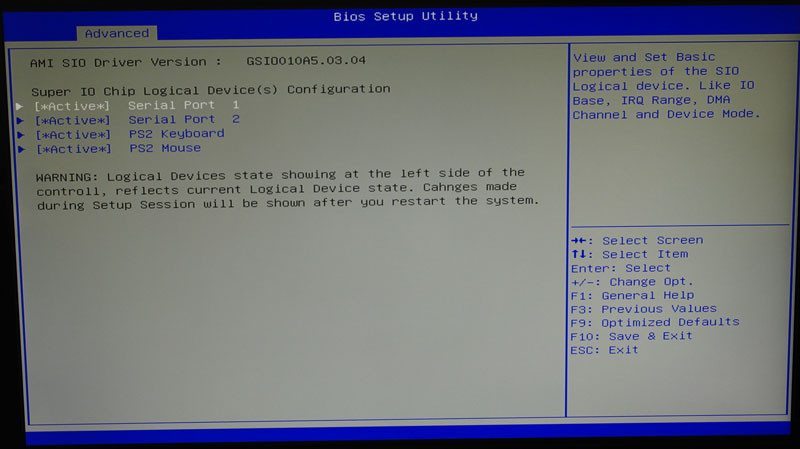
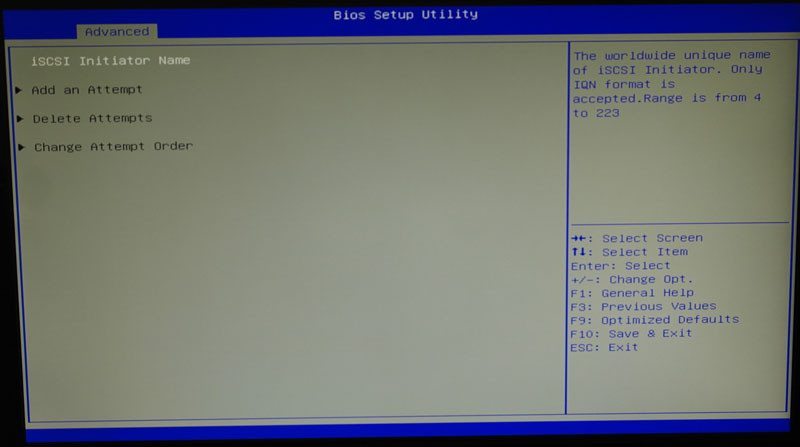
Intel IRC Setup
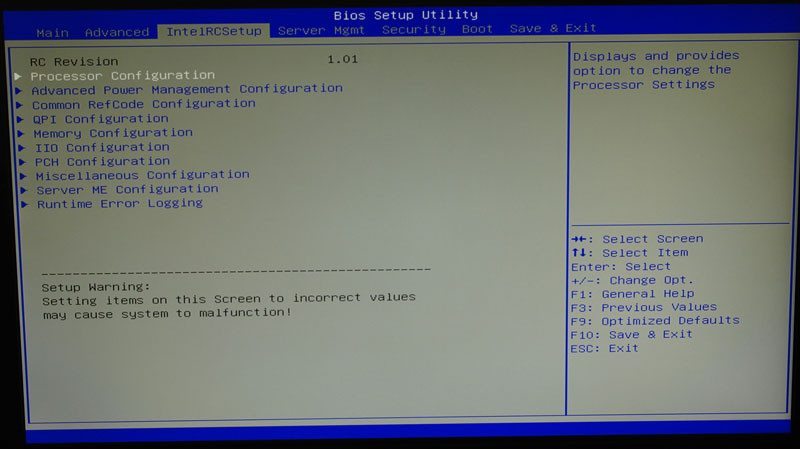
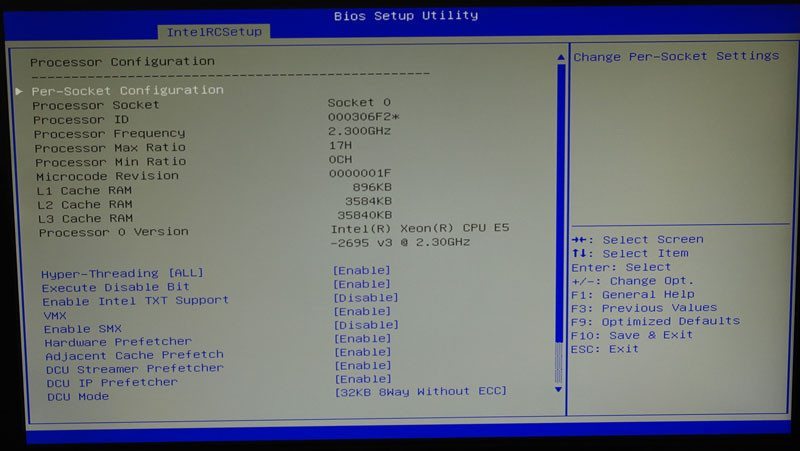
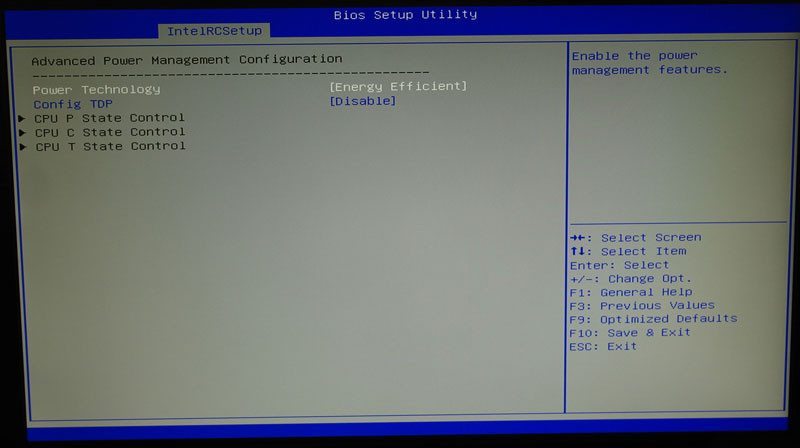
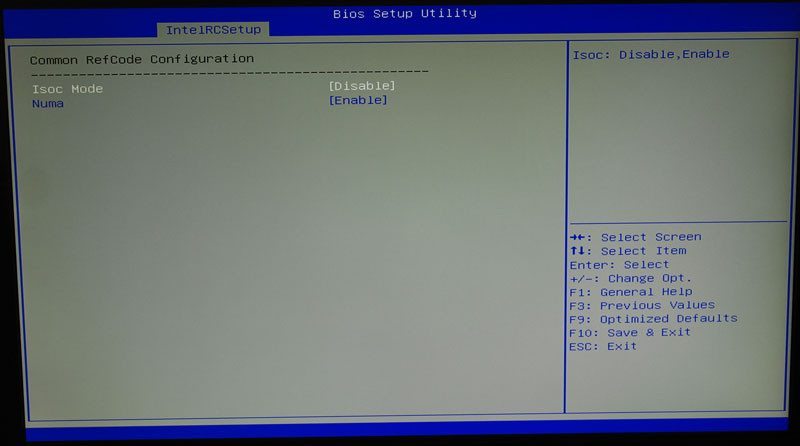
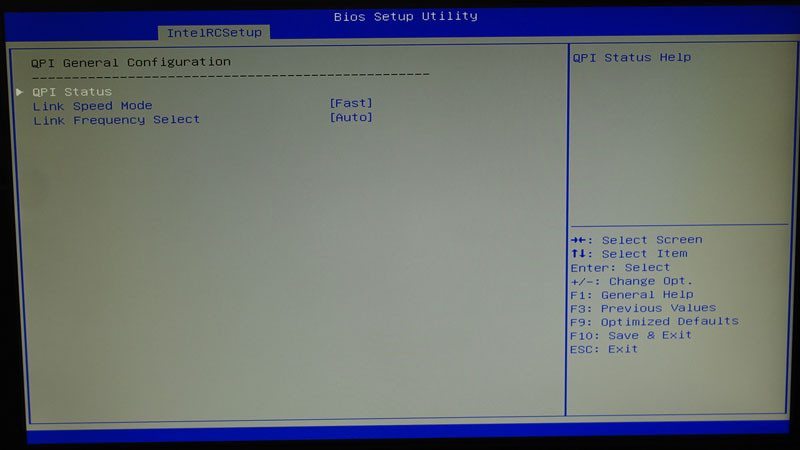
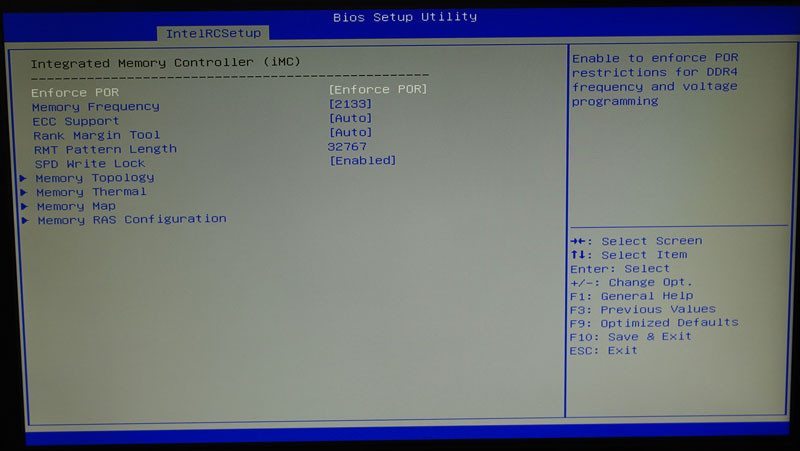
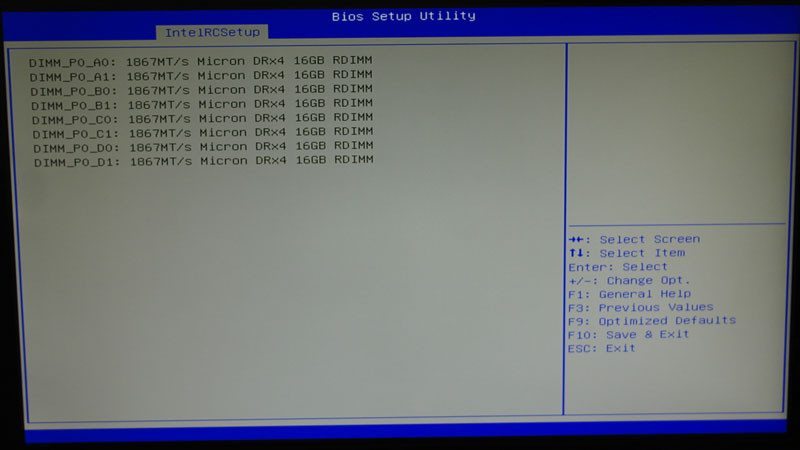
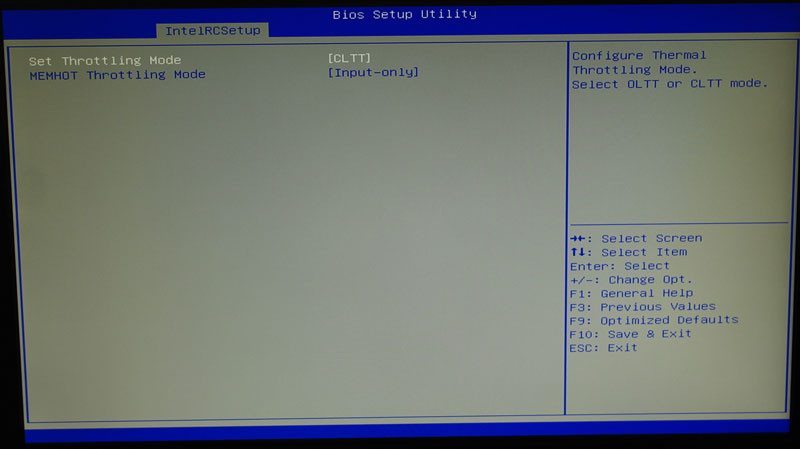
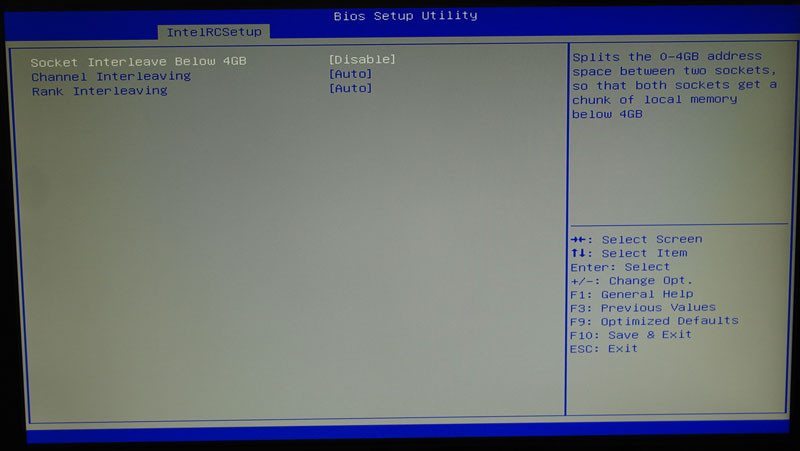
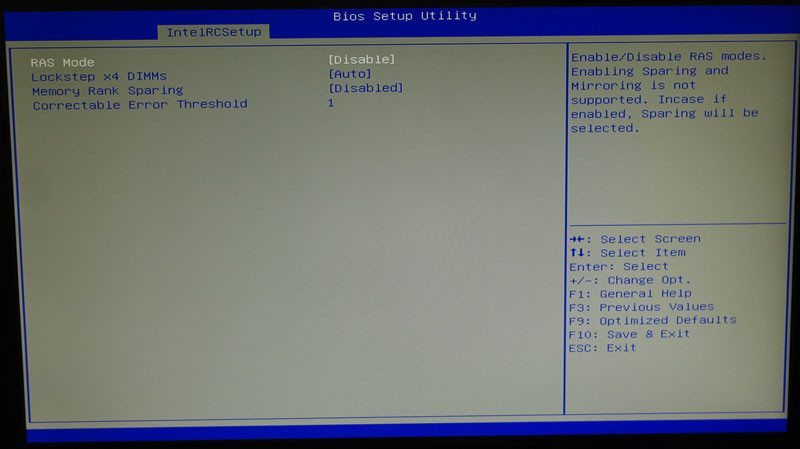
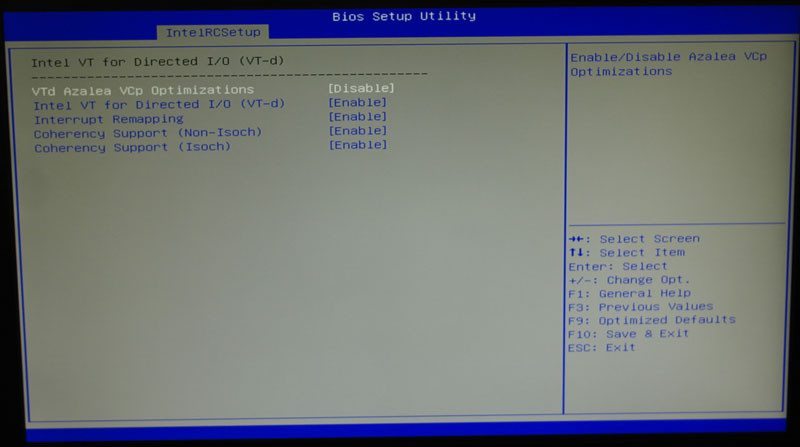
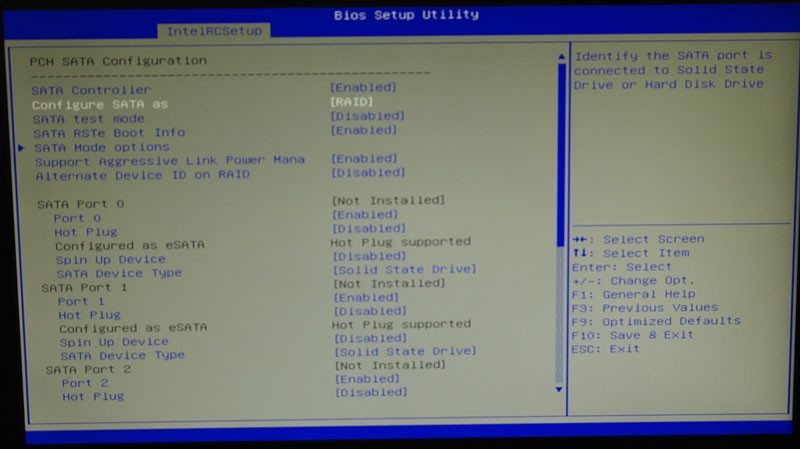
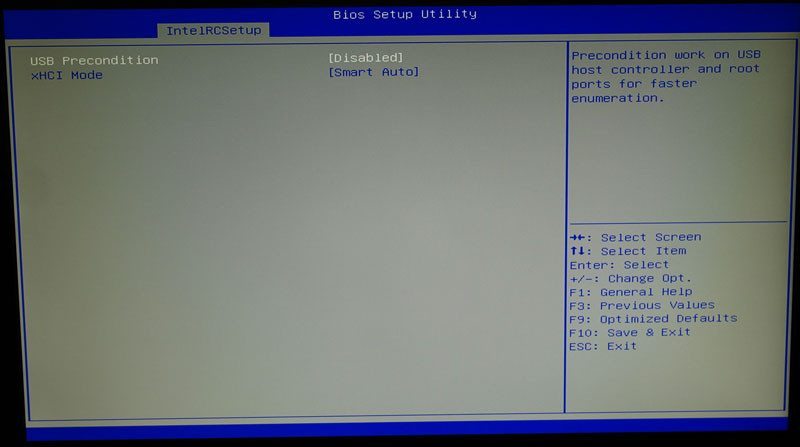
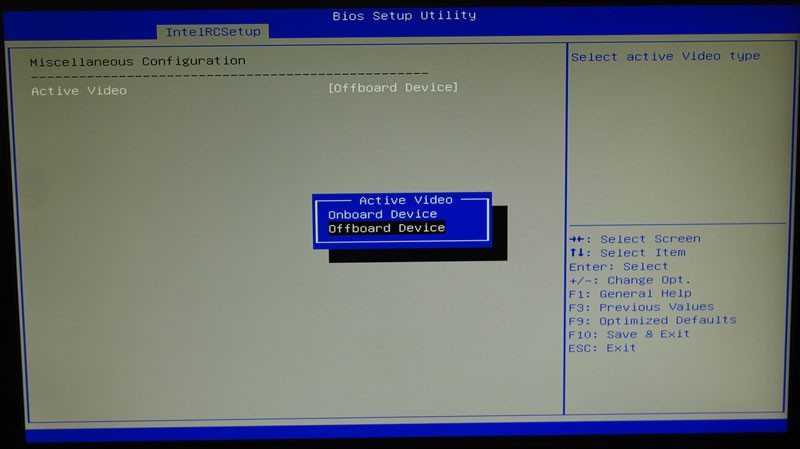
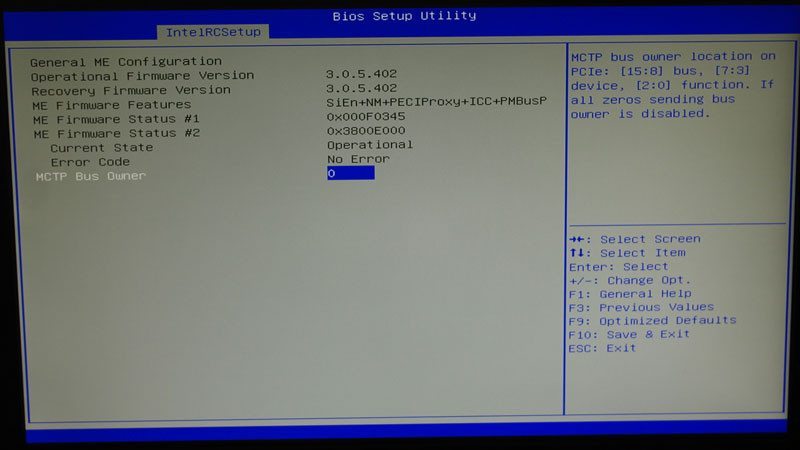
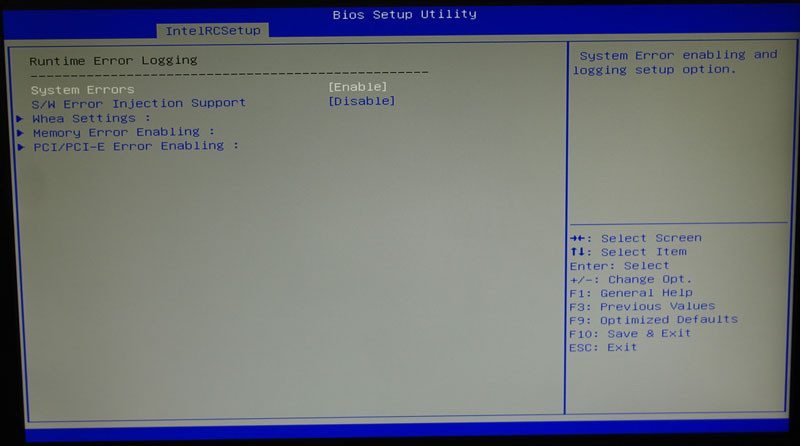
Server Management
The server management is a wonderful feature that no administrator should be without. Remotely monitor and maintain your system is a wonderful thing. On the next page you’ll find a full view on the remote interface.
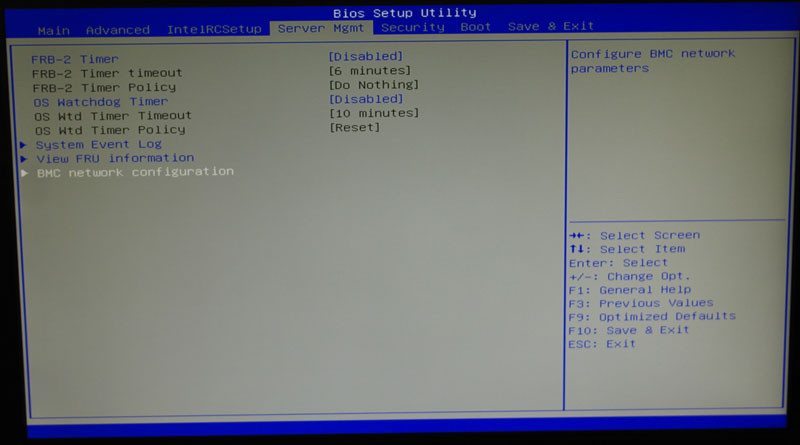
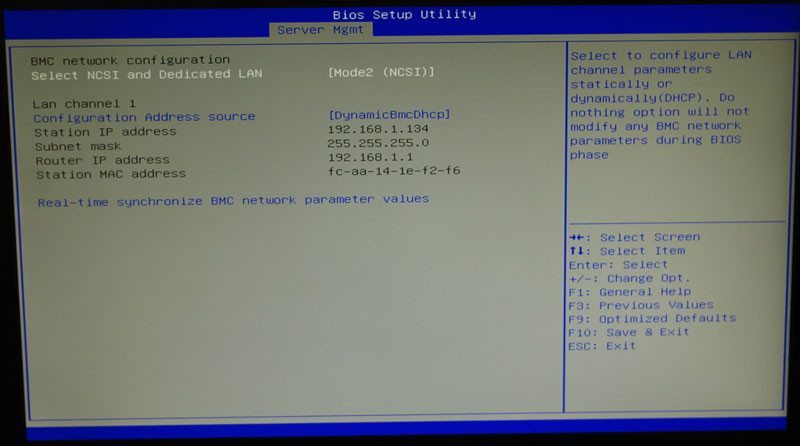
Security Settings
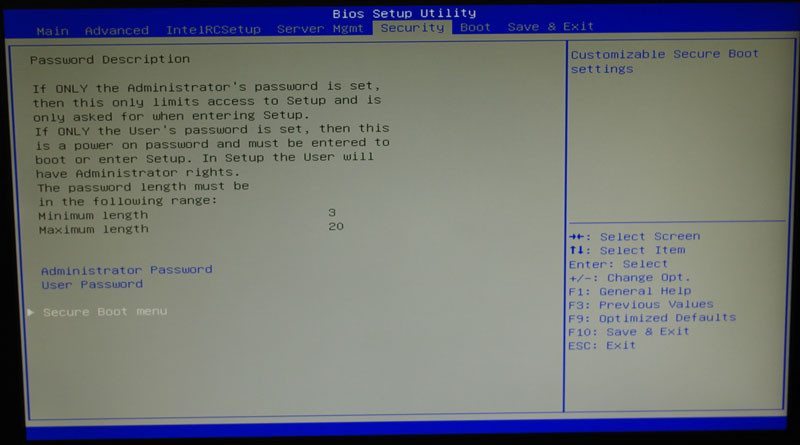
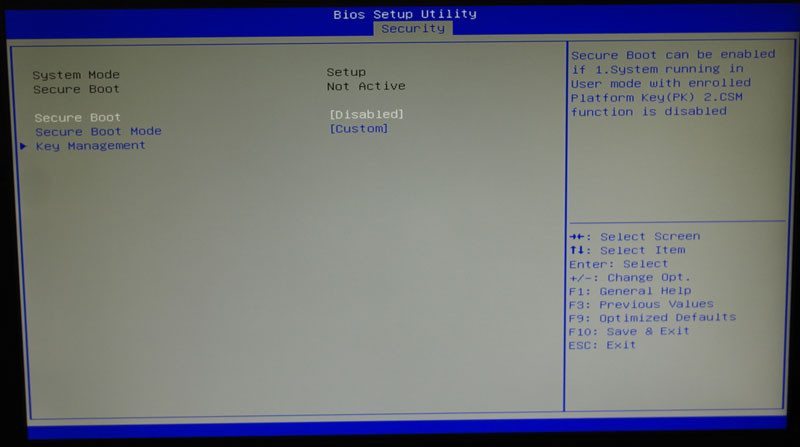
Boot settings
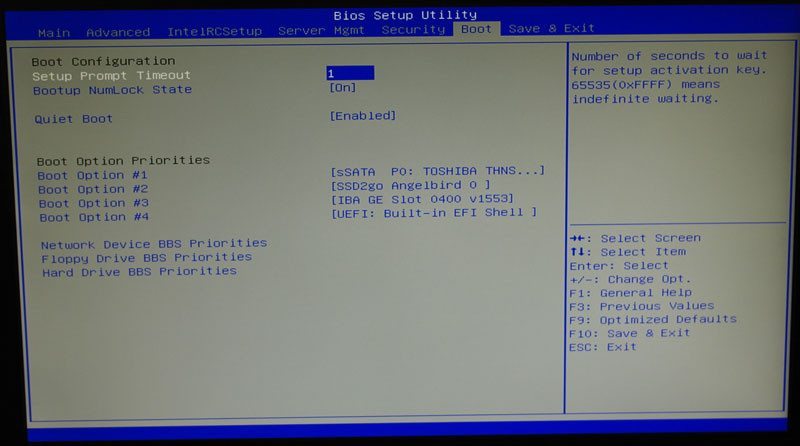
Exit and Override

Software Overview
The main software piece is actually built right into the mainboard and it’s the remote management service. This is a power utility for remote analysis and maintenance, even if the system is powered down.
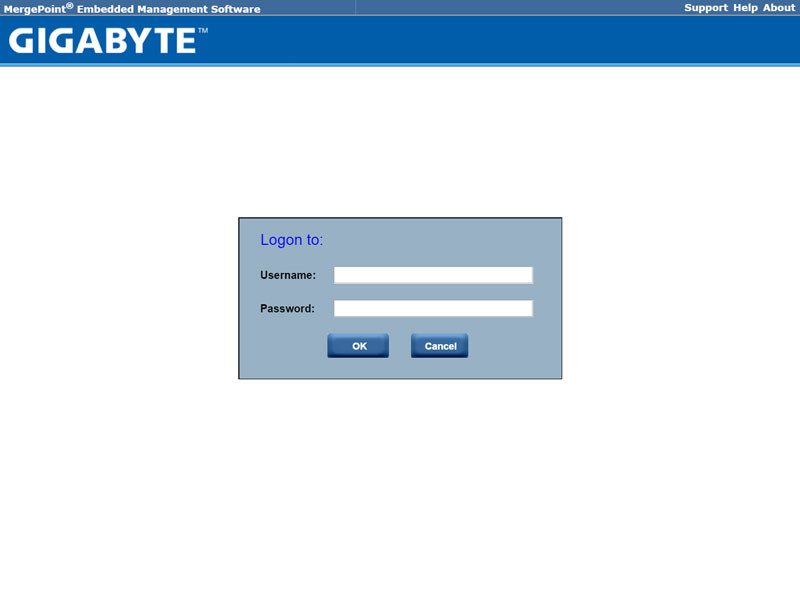
The remote management screen is very much like any other IPMI session found on other server boards. Simply enter the remote management IP address into your browser and you will be asked to login. The default name and password can be found in your manual.
Once you’re logged in you get access to a whole list of configuration options and monitoring tools. Most screenshots are self-explanatory and say more than I could by themselves, but extra explanations are added where they’re useful.
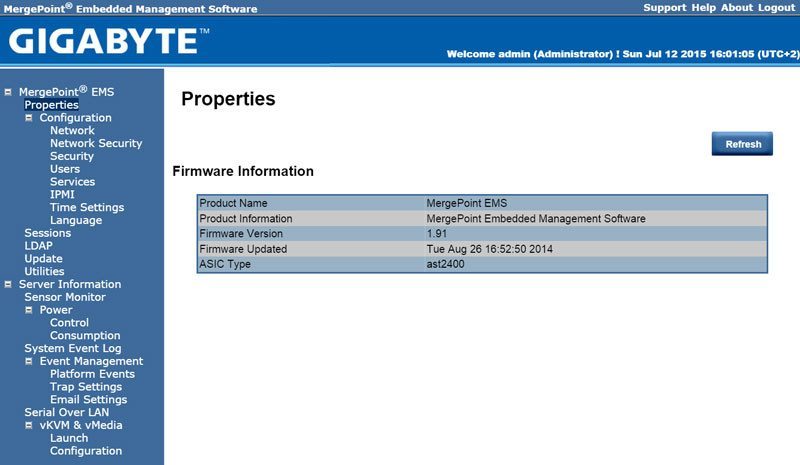
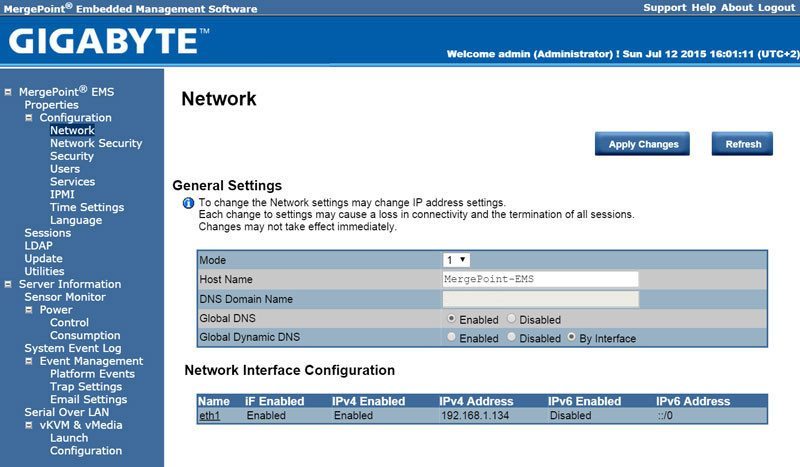
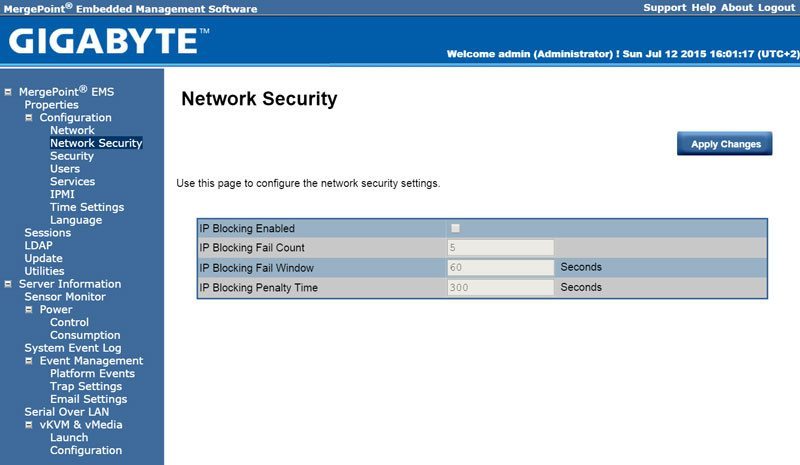

You might not want to keep the default username and password combination, so it’s great that you can change that as well as create a lot more users if more people should have access.
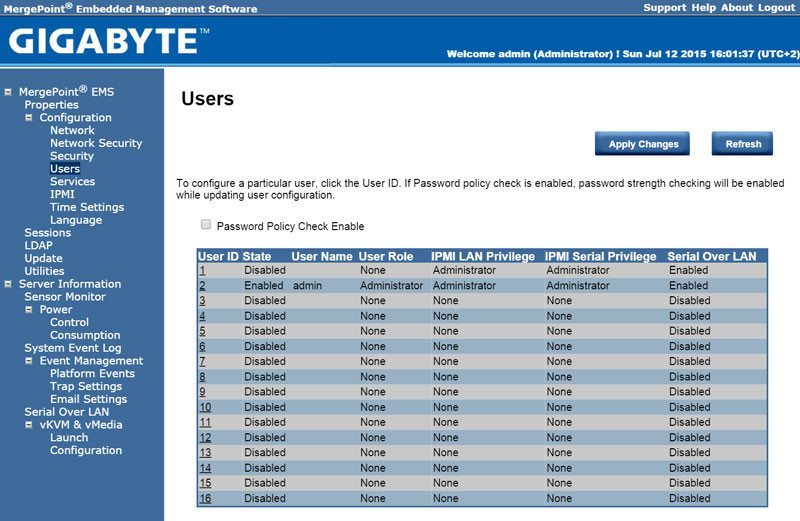
The default ports might not be free where you run them or you just want something else to match your overall system setup, not to worry. Everything can be changed.
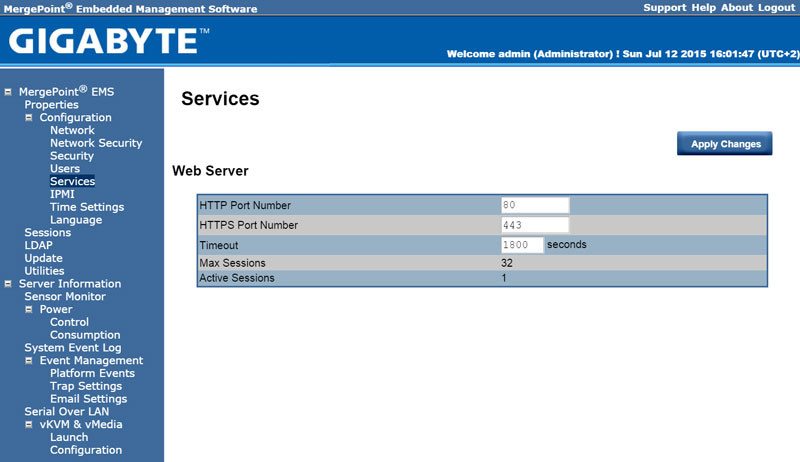

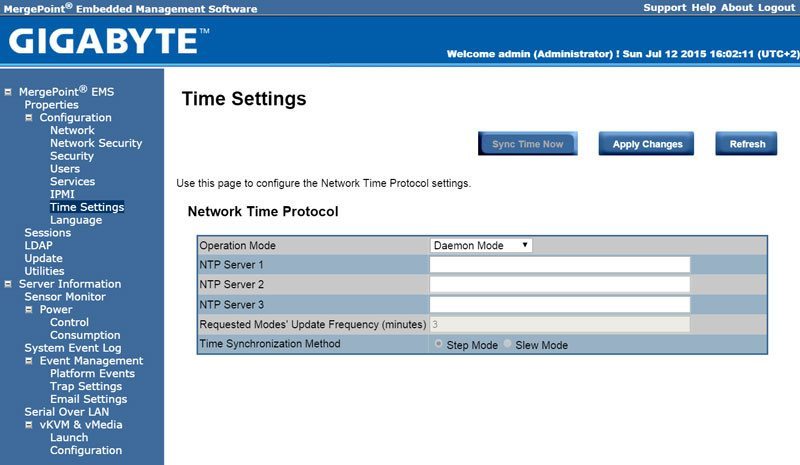
There are two languages available, Chinese and English and English was thankfully selected by default. That might be different if bought in China where we can assume the scenario is reversed.
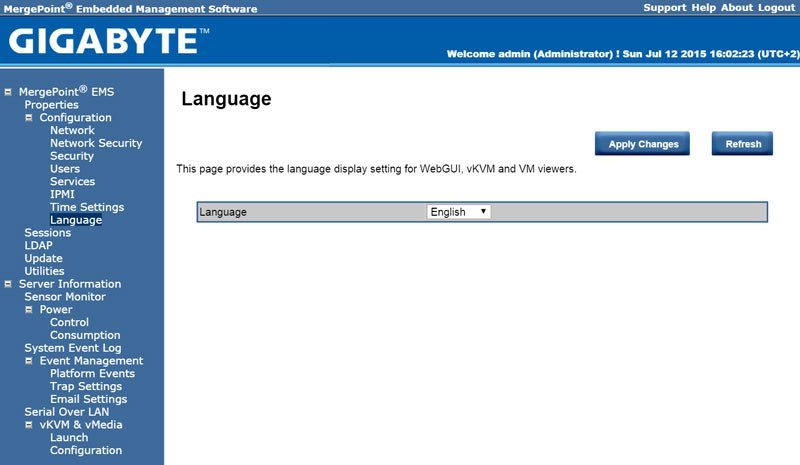
Keep track of any open sessions to the management software directly from the interface. In this case there’s only one, my own.
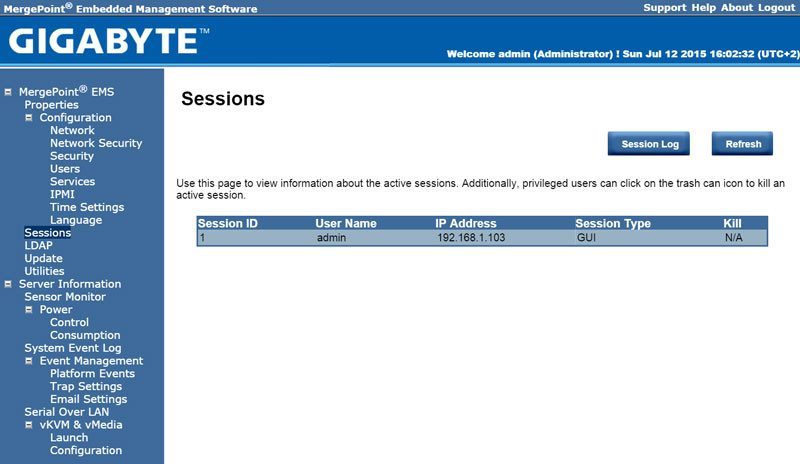
Lightweight Directory Access Protocol (LDAP) is an application protocol for querying and modifying items in directory service providers and we got full support for this as well.
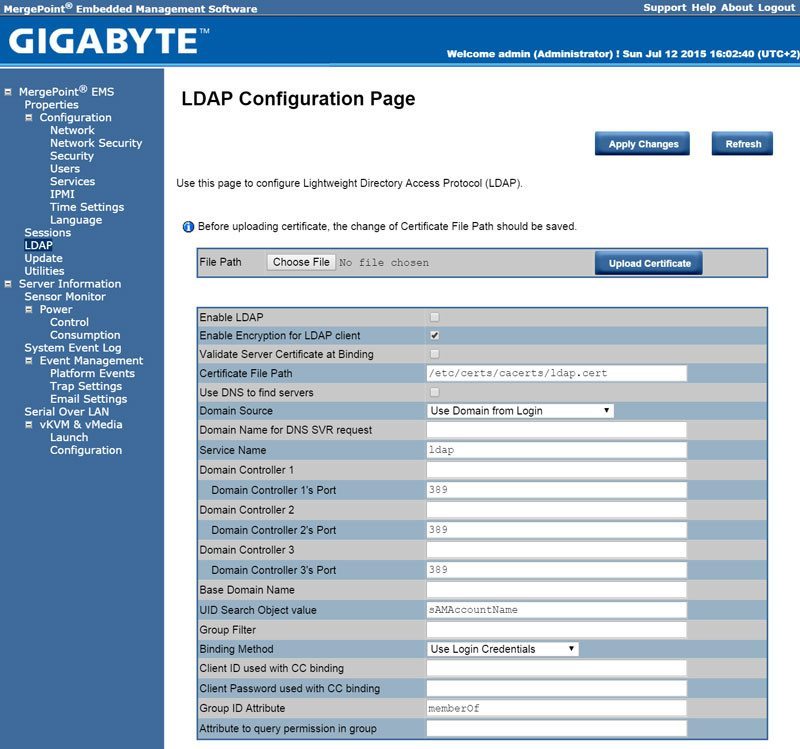
Update the firmware of either just the BMC or update your BIOS remotely and the system doesn’t even need to be turned on, it just needs to be connected to a PSU. At the time of these screenshots the system is powered off.
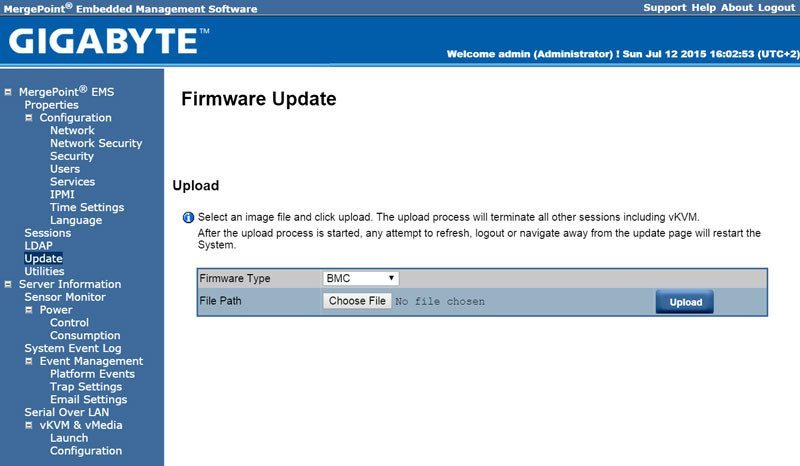
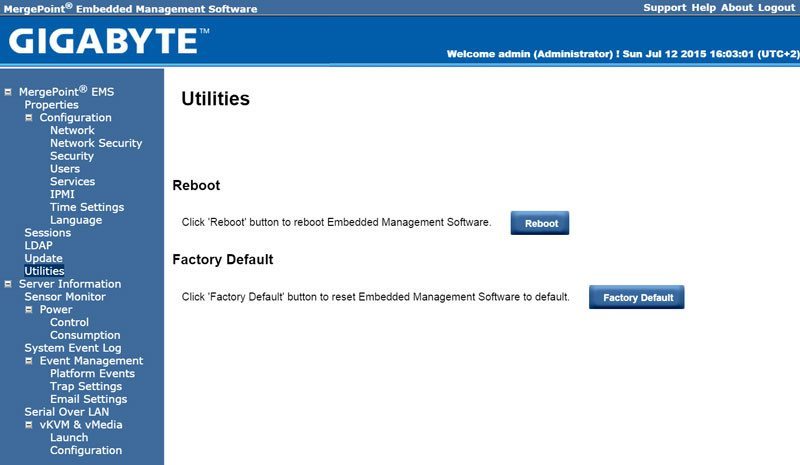
Monitor your system sensors from voltage to fans, you got it all remotely.
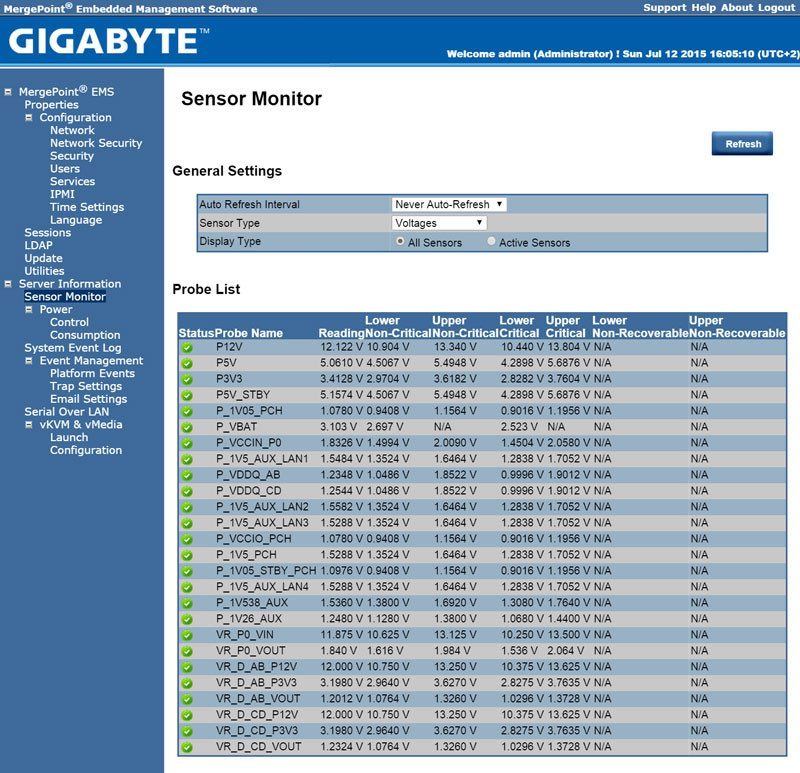
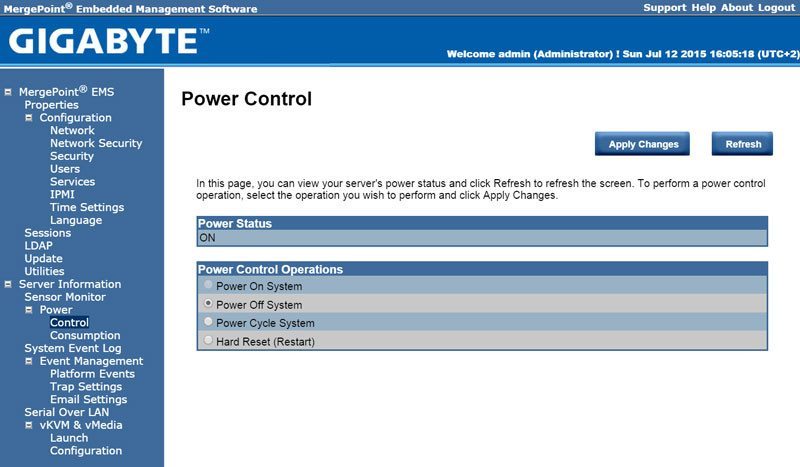
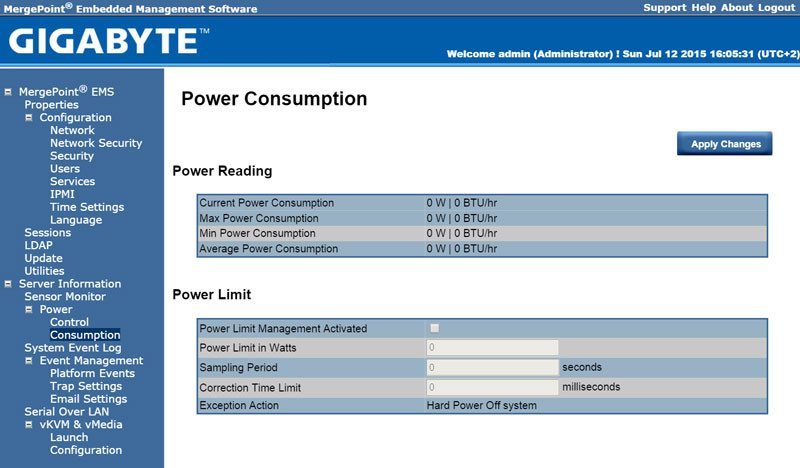
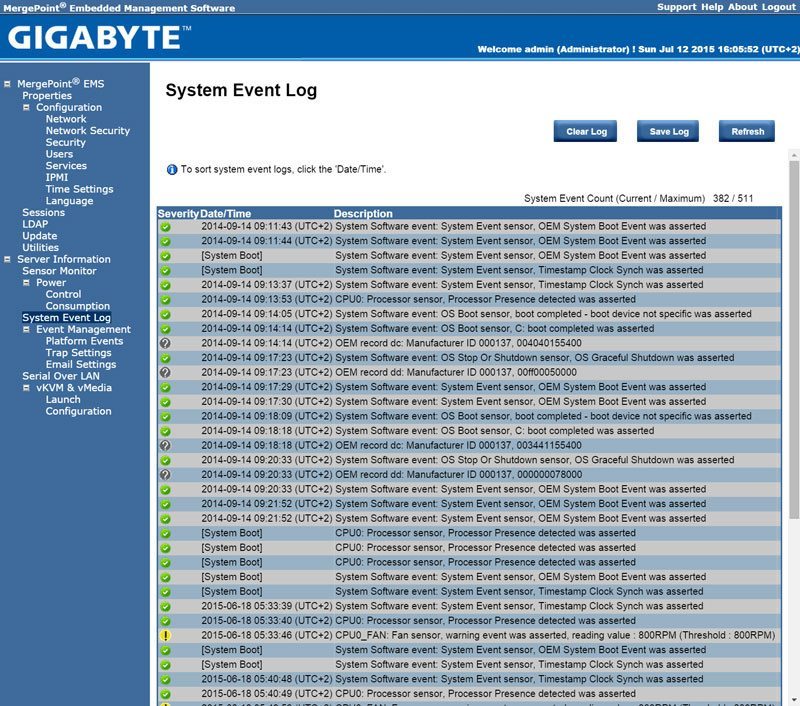
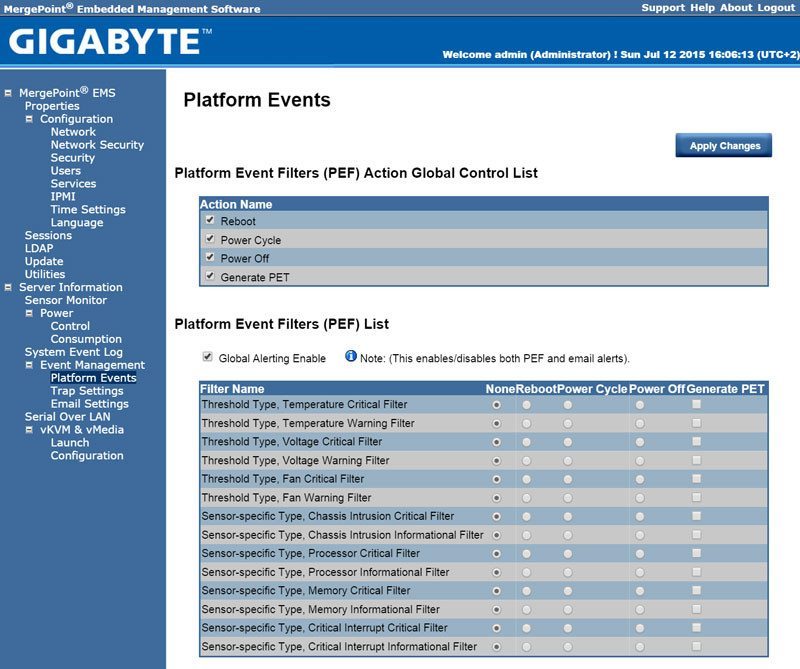
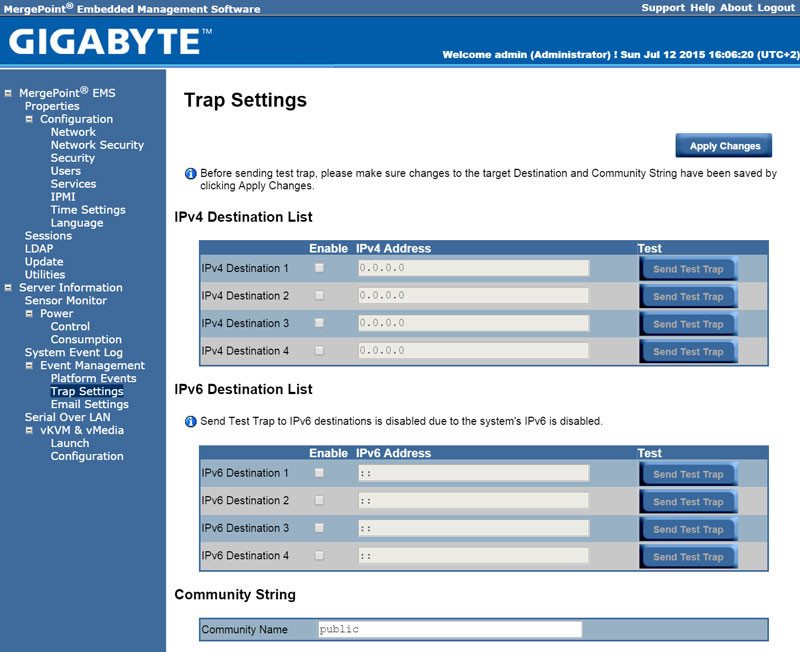
Alert settings are a major feature that shouldn’t be missed. Get an instant email in case anything should go wrong.
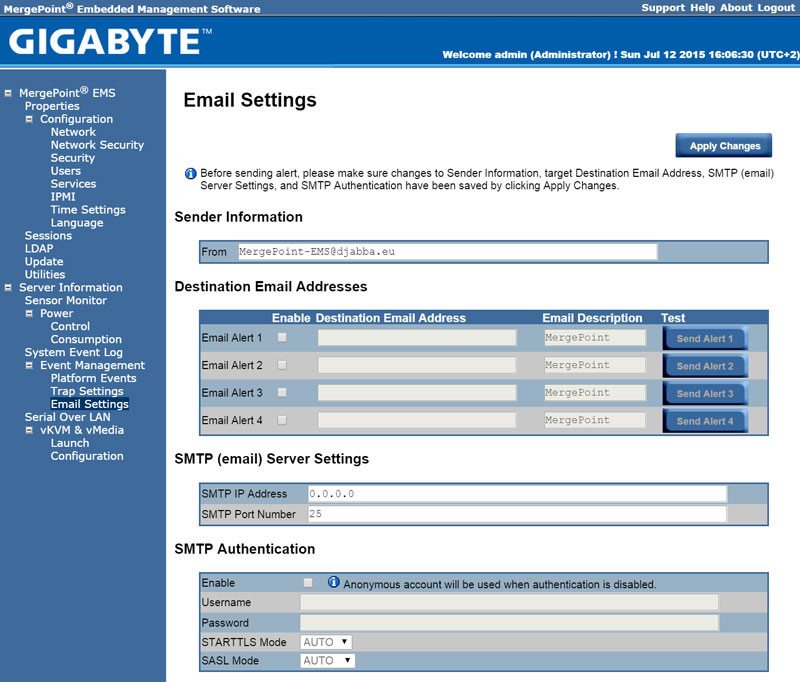
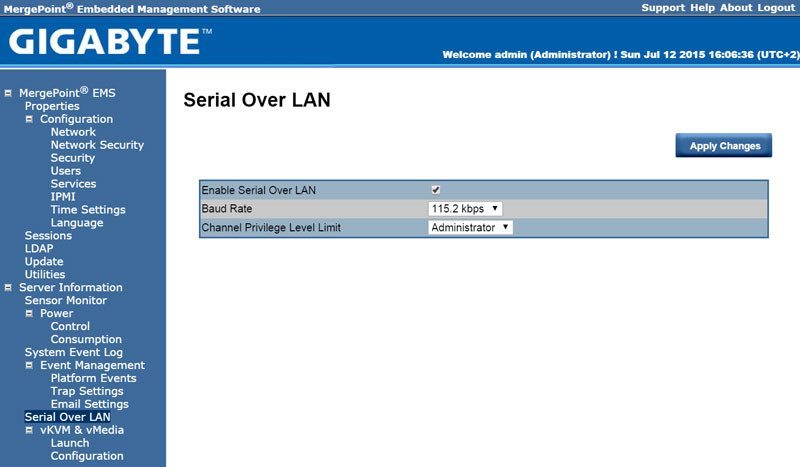
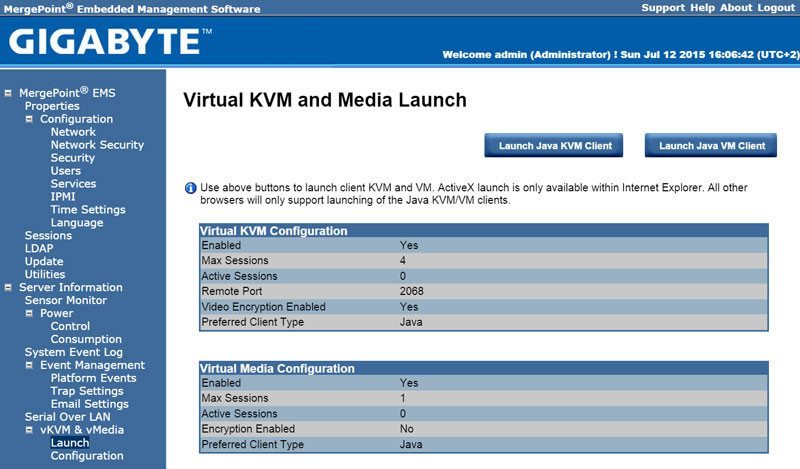
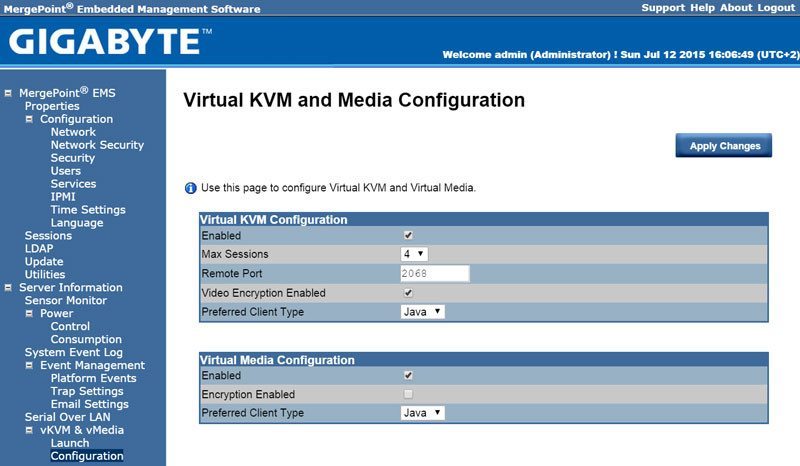
CPU Performance
AIDA64 Engineer
AIDA64 Engineer provides several methods to measure system performance. These benchmarks are synthetic, ie. the results show only the theoretical (maximum) performance of the system. In contrast to application tests, synthetic benchmarks do not tend to reflect the “real world” performance of the computer. These benchmarks provide quick and easy comparison between computer states, e.g. when certain parameters (CPU clock speed, memory timings, etc) change in system configuration.
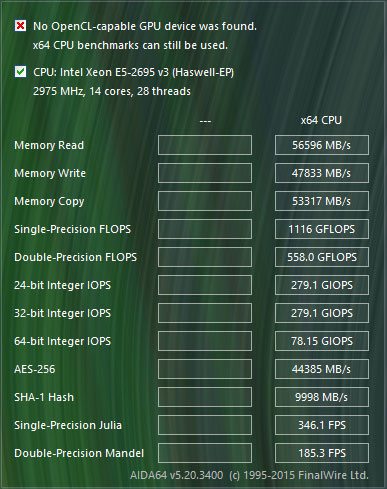
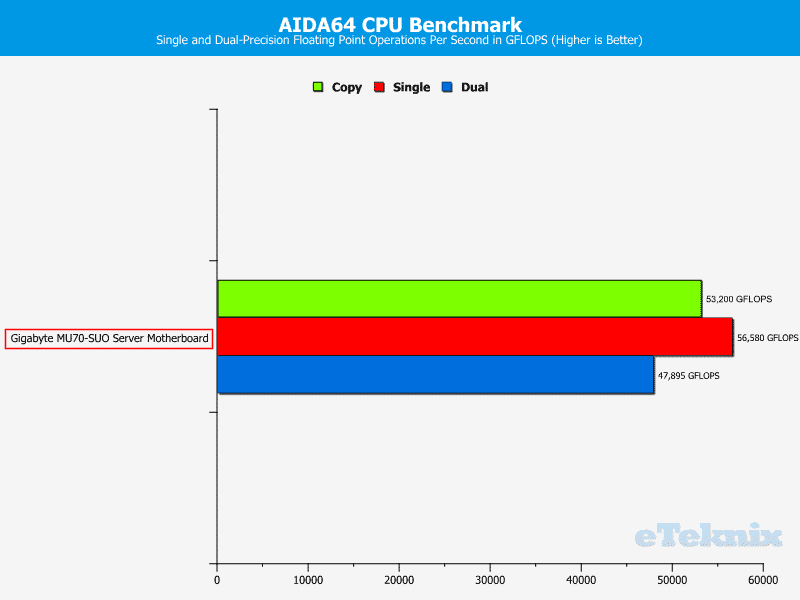
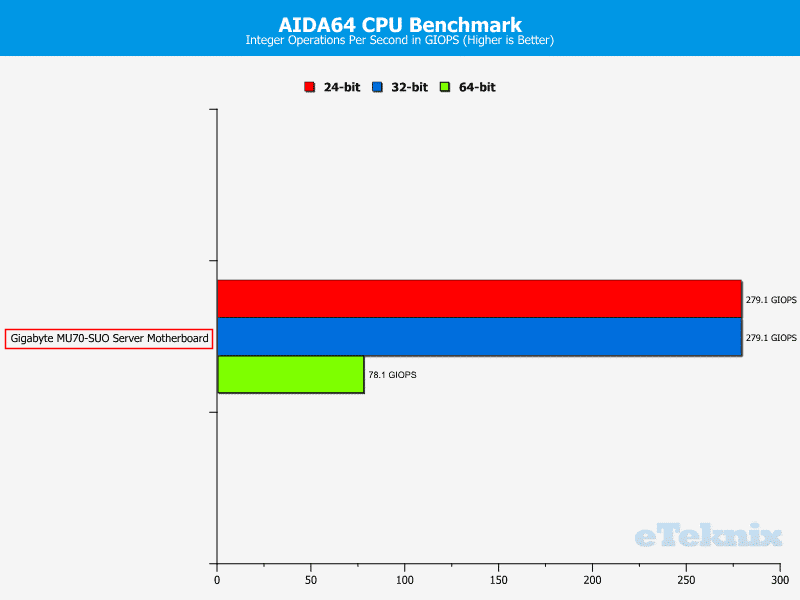
Cinebench R11.5 & R15.0
Cinebench is a real-world cross-platform test suite that evaluates your computer’s performance capabilities. Cinebench is a perfect tool to compare CPU and graphics performance across various systems and platforms, and best of all: It’s completely free.

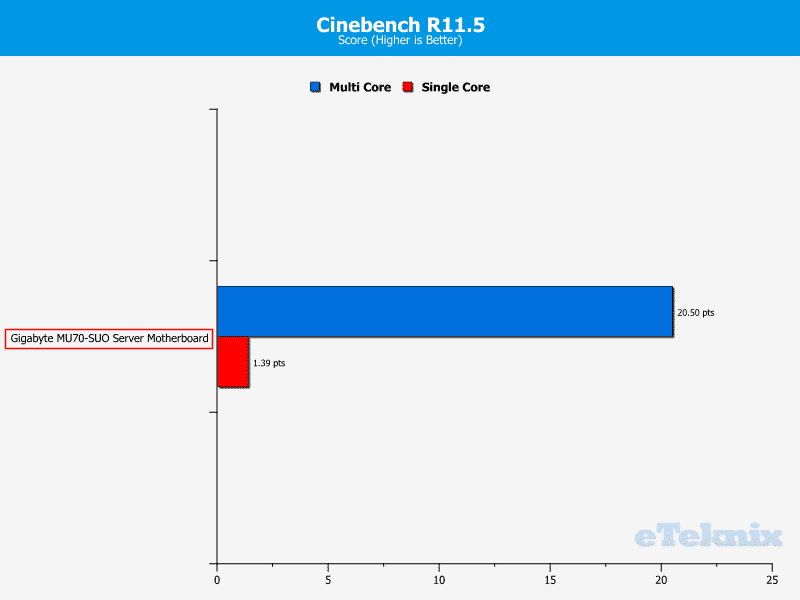
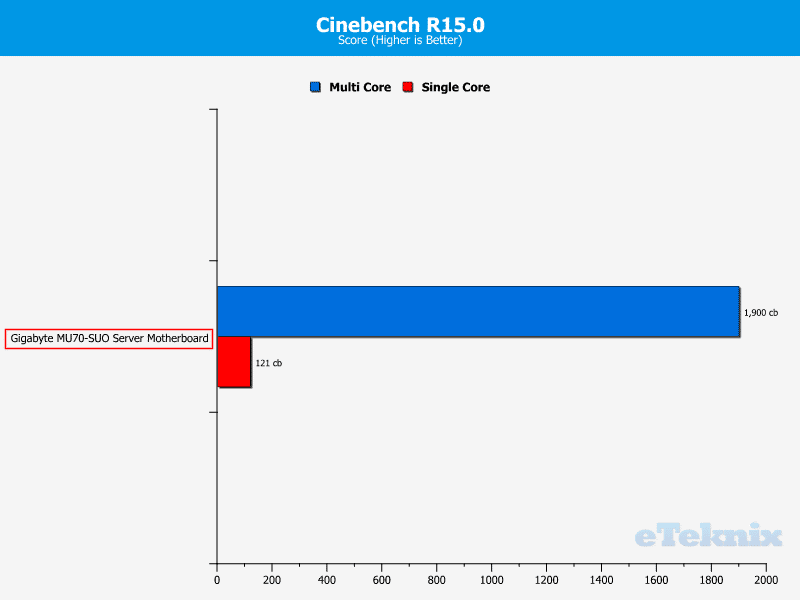
wPrime
wPrime is a leading multithreaded benchmark for x86 processors that tests your processor performance by calculating square roots with a recursive call of Newton’s method for estimating functions, with f(x)=x2-k, where k is the number we’re sqrting, until Sgn(f(x)/f'(x)) does not equal that of the previous iteration, starting with an estimation of k/2. It then uses an iterative calling of the estimation method a set amount of times to increase the accuracy of the results. It then confirms that n(k)2=k to ensure the calculation was correct. It repeats this for all numbers from 1 to the requested maximum.
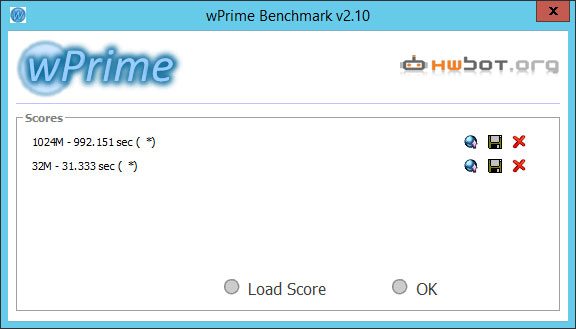
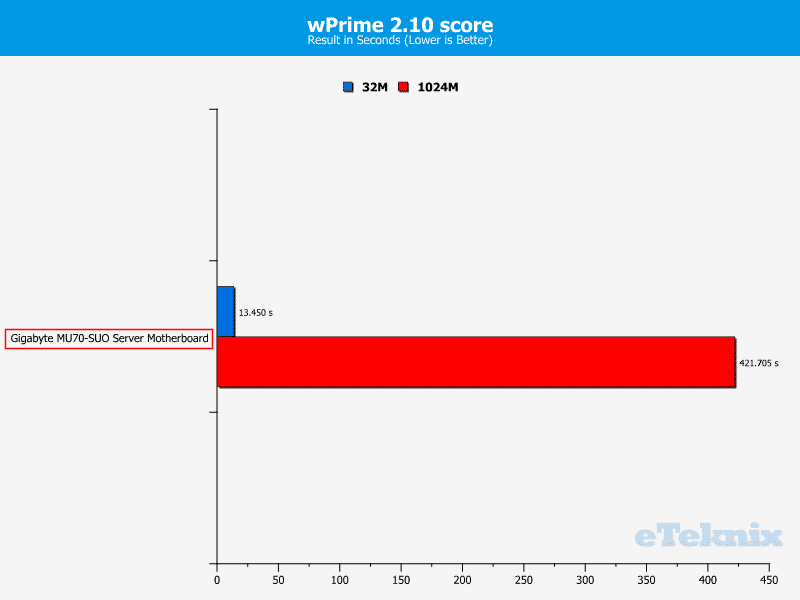
SuperPi
Super PI is a computer program that calculates pi to a specified number of digits after the decimal point—up to a maximum of 32 million. It uses Gauss–Legendre algorithm and is a Windows port of the program used by Yasumasa Kanada in 1995 to compute pi to 232 digits.
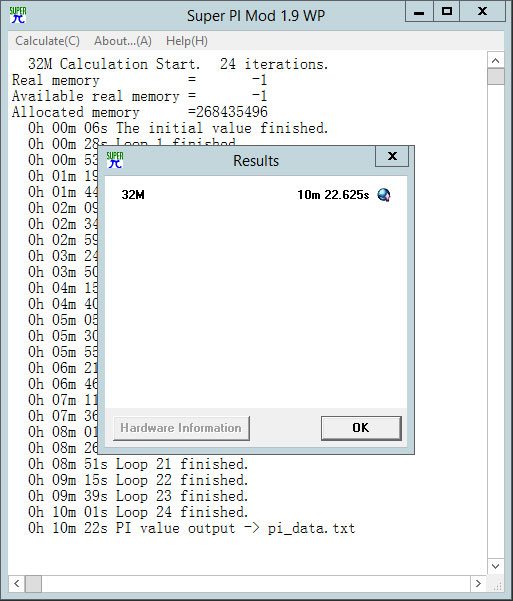
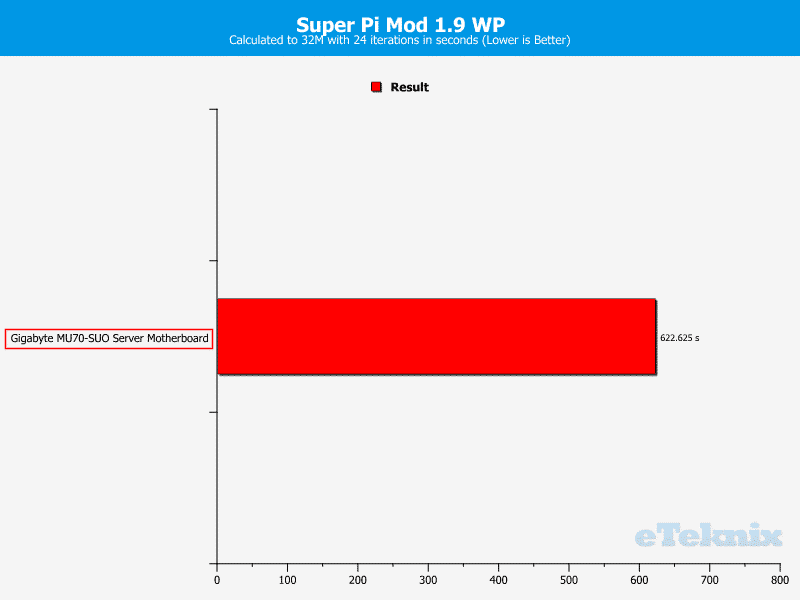
Memory Performance
For our memory tests we use the built-in memory benchmarks in AIDA64 Engineer, Geekbench 3, PerformanceTest, and SiSoftware Sandra. A wider array of tests will give us a wider array of results.
AIDA64 Engineer
AIDA64 Engineer provides several methods to measure system performance. These benchmarks are synthetic, ie. the results show only the theoretical (maximum) performance of the system. In contrast to application tests, synthetic benchmarks do not tend to reflect the “real world” performance of the computer. These benchmarks provide quick and easy comparison between computer states, e.g. when certain parameters (CPU clock speed, memory timings, etc) change in system configuration.

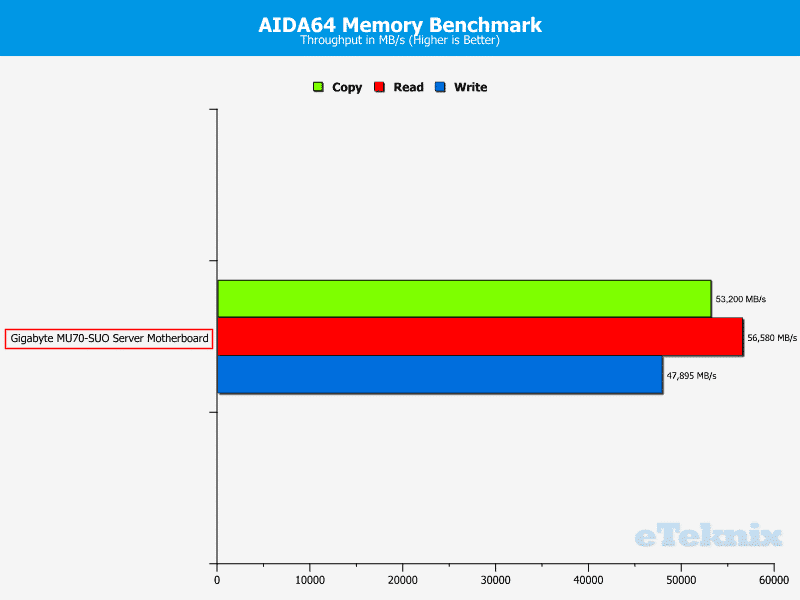
PerformanceTest 8.0
PerformanceTest is a fast, easy to use software benchmarking tool that allows everybody to quickly assess the performance of their PC and compare it to a number of standard ‘baseline’ computer systems.
PerformanceTest allows you to compare the performance of your machine, measure the effect of configuration changes and upgrades, and make objective independent measurements on which to base your purchasing decision.

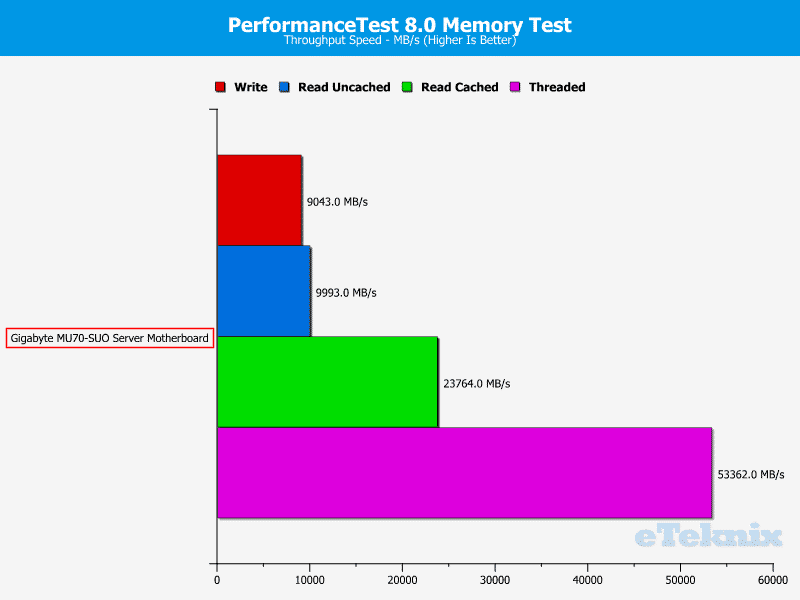
Geekbench 3
Geekbench 3 is Primate Labs’ cross-platform processor benchmark. It has a multi-scoring system for both single-core and multi-core performance and workloads that simulate real-world scenarios. It is however the STREAM based memory tests that we will be using here.
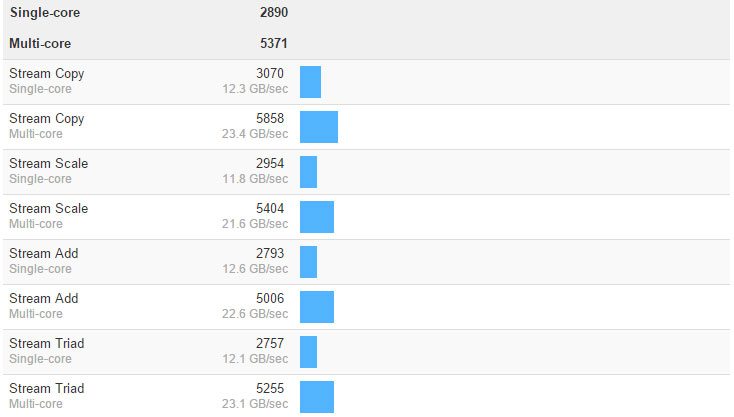
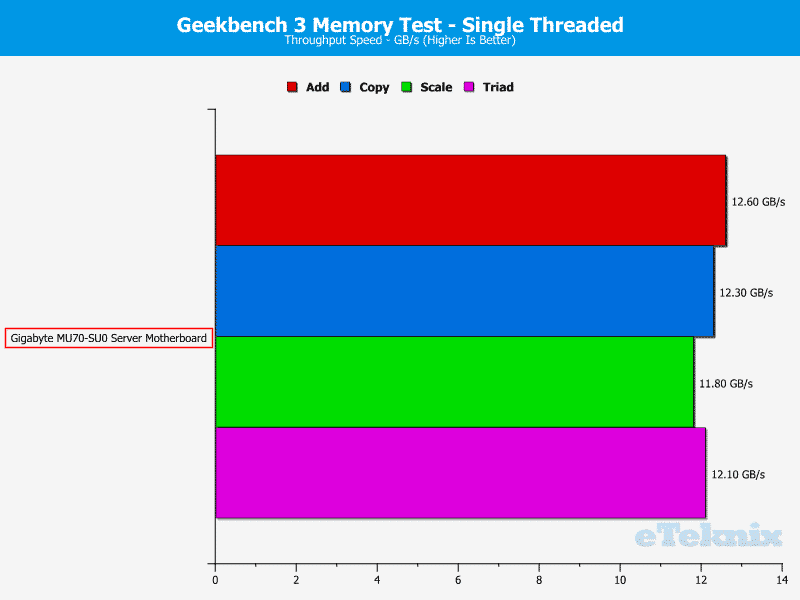
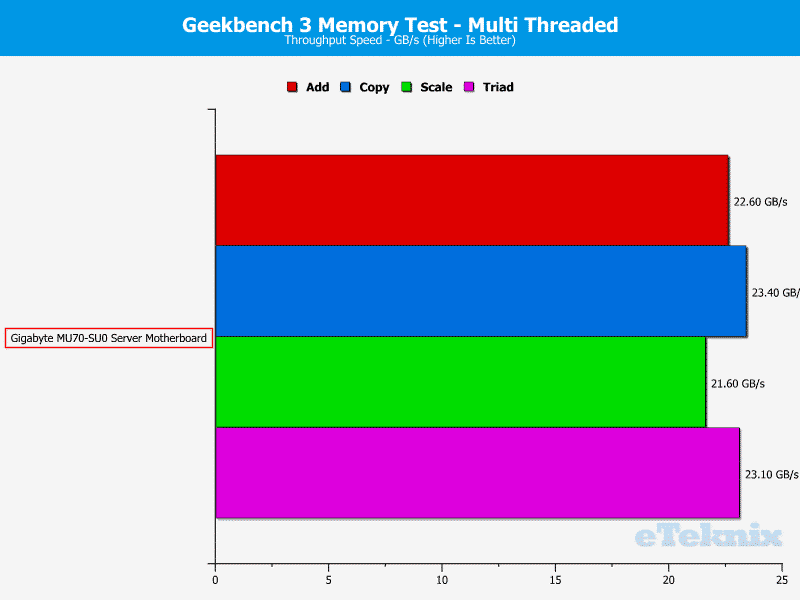
SiSoftware Sandra
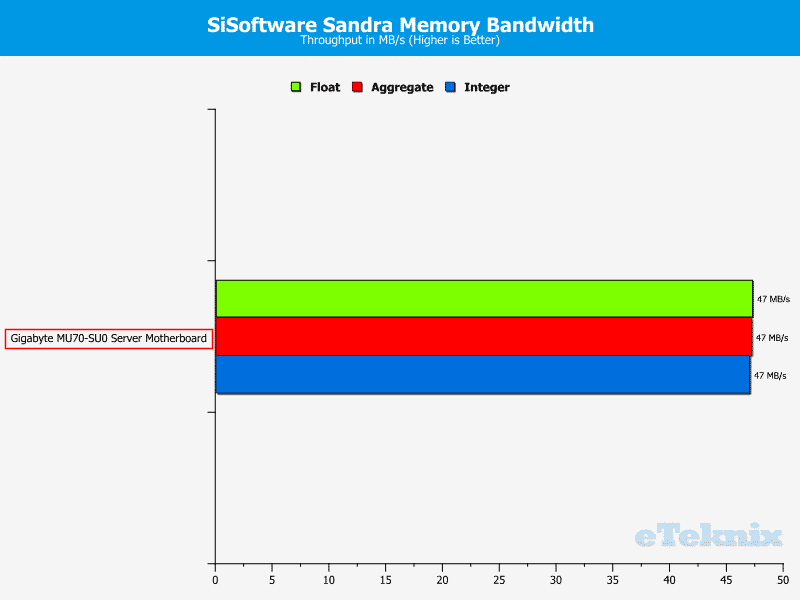
Combined Latency
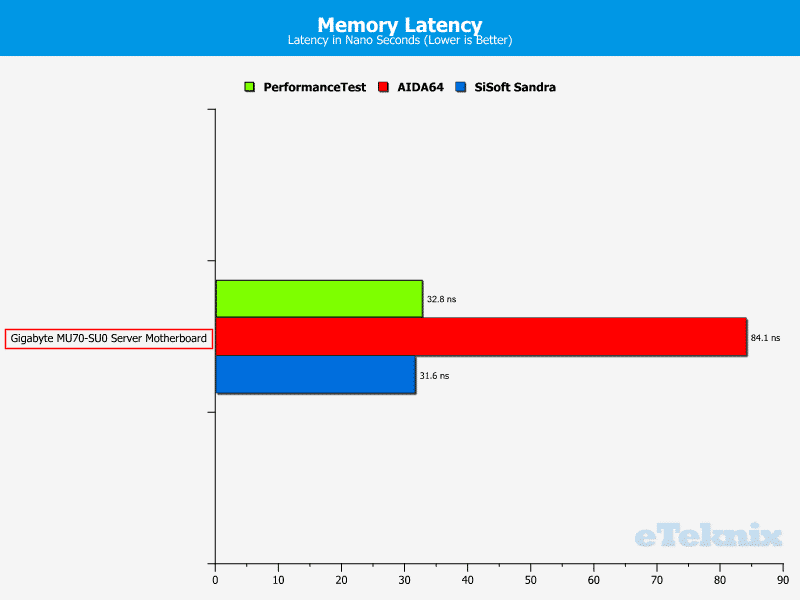
Storage Performance
To test the storage performance in our motherboard reviews I use AIDA’s Disk Benchmark utility built into their AIDA64 Engineer Edition software package and run linear read and write tests.
We run the benchmark tests on the SATA III and USB 3.0 as well as any other storage options available. For SATA III testing I use a Toshiba HG6 512GB SSD and for USB 3.0 an Angelbird SSD2go Pocket 512GB SSD.
This motherboard also has an mSATA slot that I’ll be testing with an mSATA SSD I stole from our MyDigitalSSD |OTG. It is based on a Phison PS3108-S8 controller, has 256MB cache, and four Micron MLC Sync NAND Flash packages.
Average Read Performance
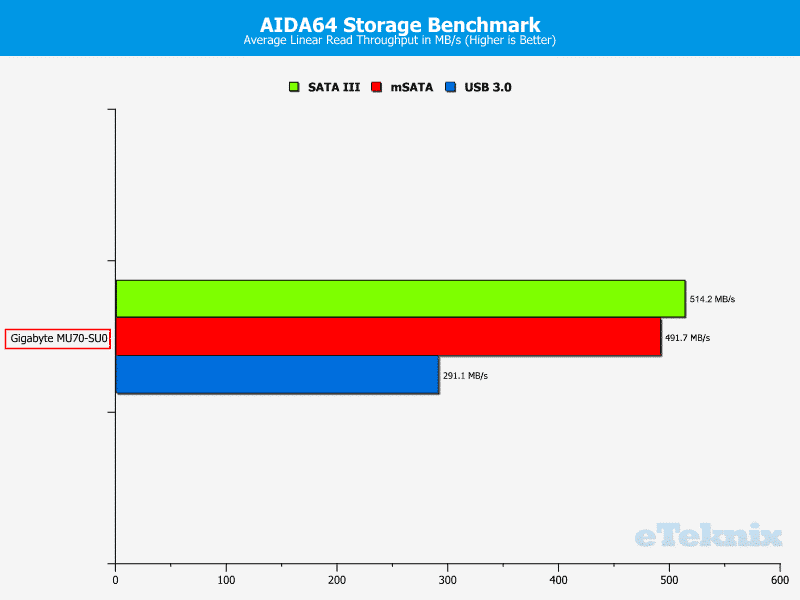
Maximum Read Performance
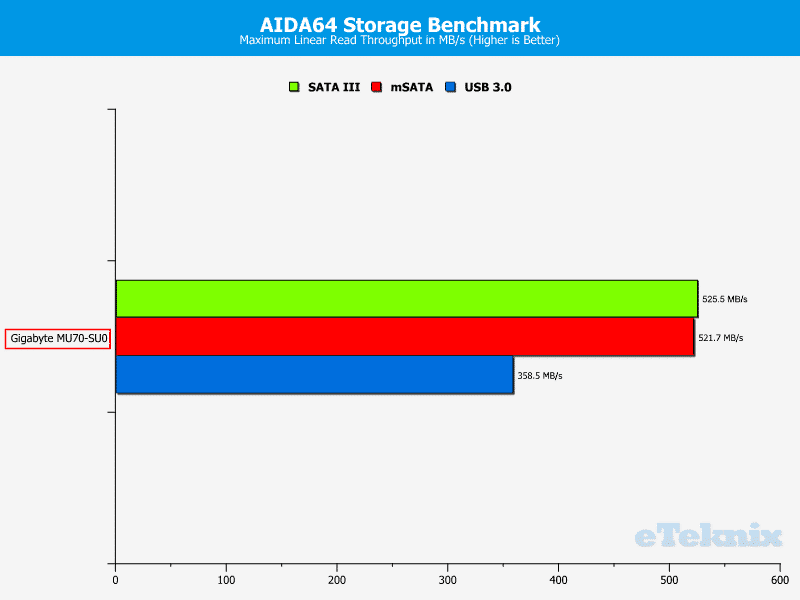
Minimum Read Performance
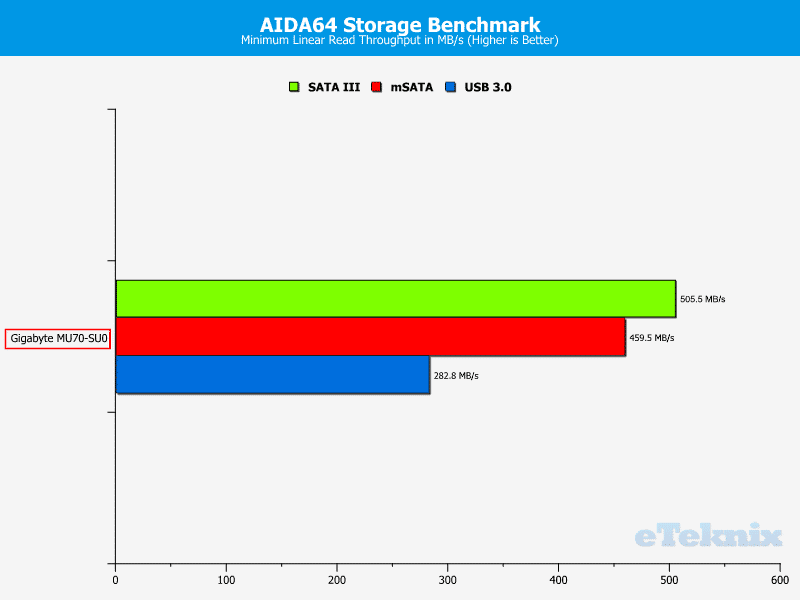
Average Write Performance
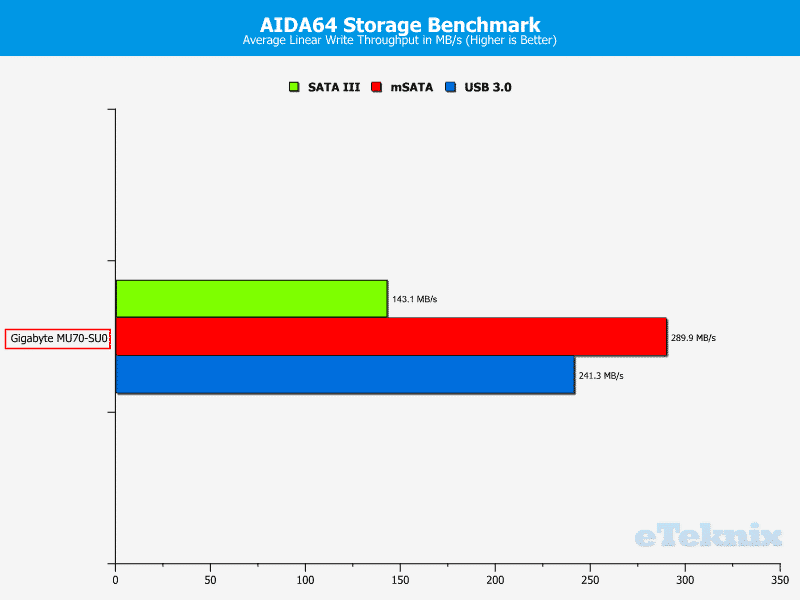
Maximum Write Performance
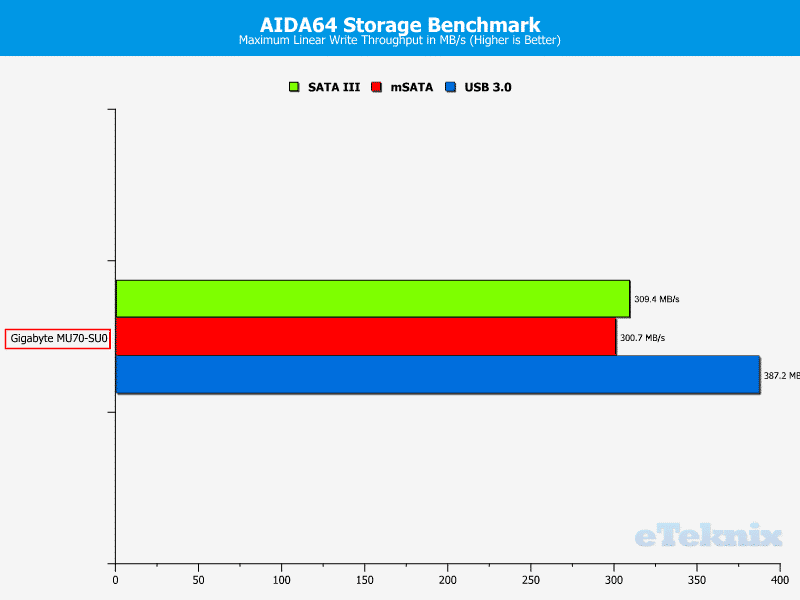
Minimum Write Performance
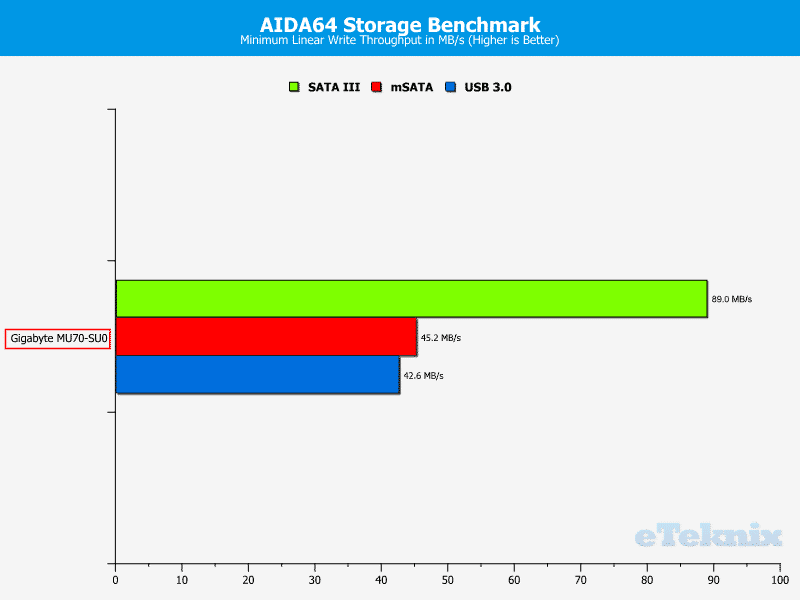
Network Performance
For the networking tests I will connect the test system up to our Intel Gigabit-enabled Supermicro C7Z97-OCE network and storage test system through a Netgear ProSafe GS724TPS managed switch and run our tests. This setup should present a good real-world performance and give a better result than a direct connection would. I will be performing the network tests as both single connection and with dynamic link aggregation.
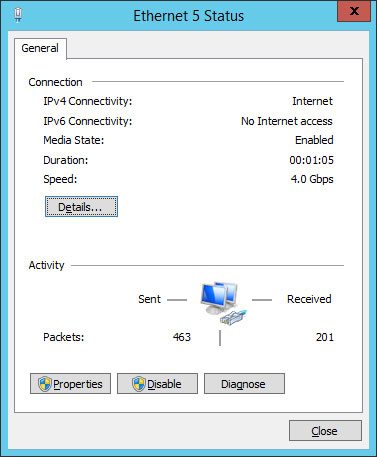
LAN Speed Test
LAN Speed Test was designed from the ground up to be a simple but powerful tool for measuring file transfer, hard drive, USB Drive, and Local Area Network (LAN) speeds (wired & wireless). It does this by building a file in memory, then transfers it both ways without effects of windows file caching and while keeping track of the time.
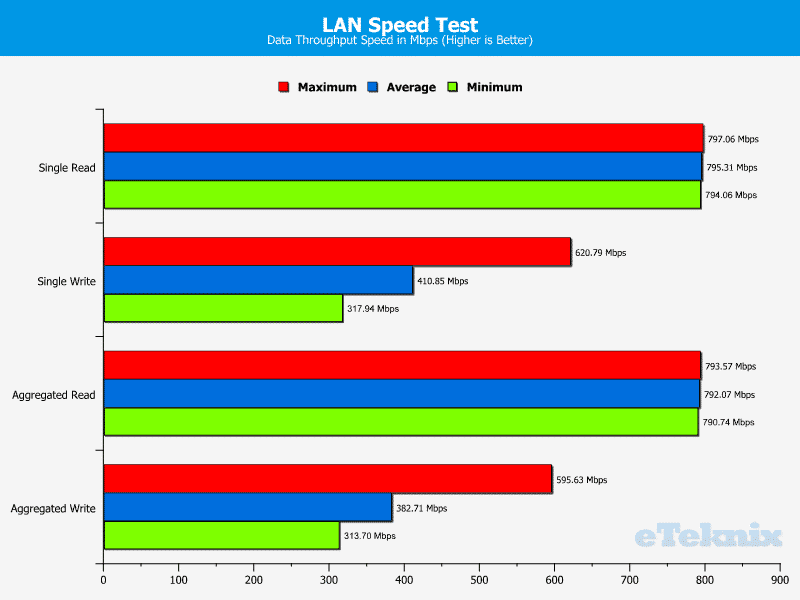
Passmark Performance Test 8
The PassMark Advanced Network Test, a part of PerformanceTest, is designed to test the data transfer rate between two computers both of which must be running PerformanceTest. One of the computers acts as the server and will wait for a connection while the other computer acts as a client.
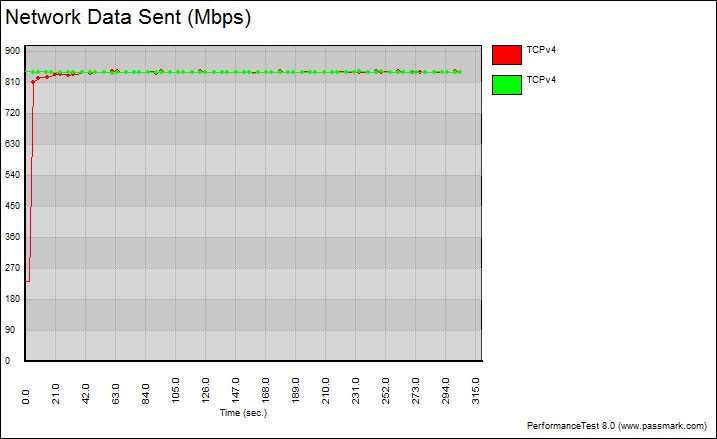
TCP Fixed and Variable Packet Sizes
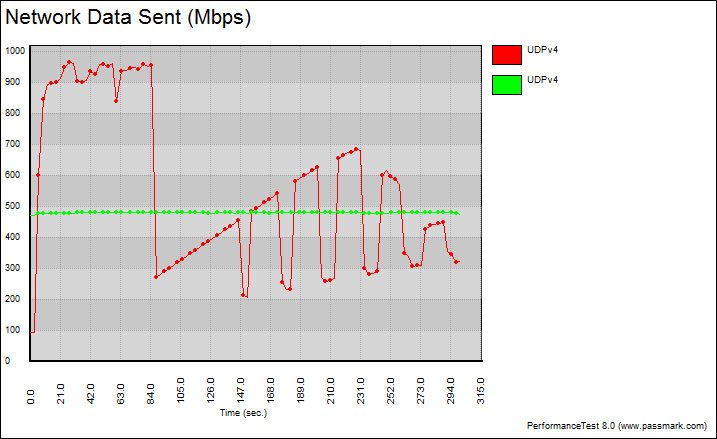
UDP Fixed and Variable Packet Sizes
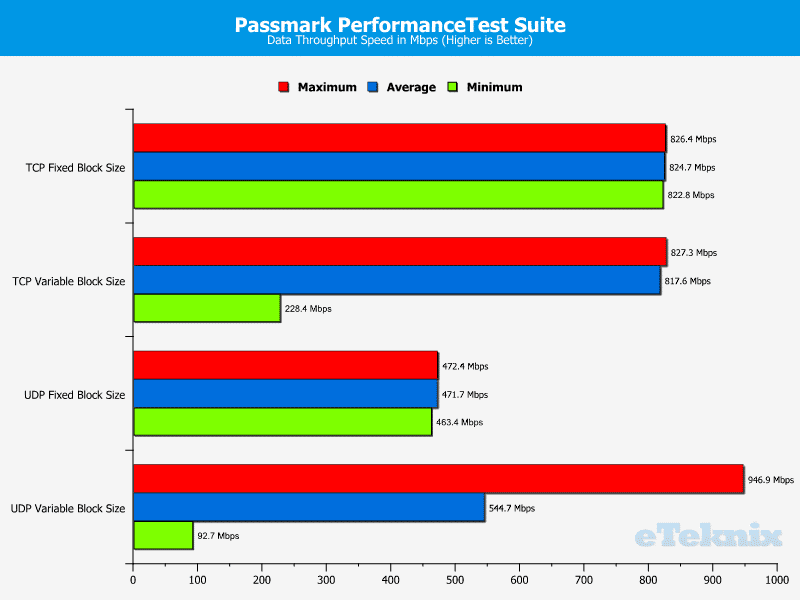
Teamed Connections
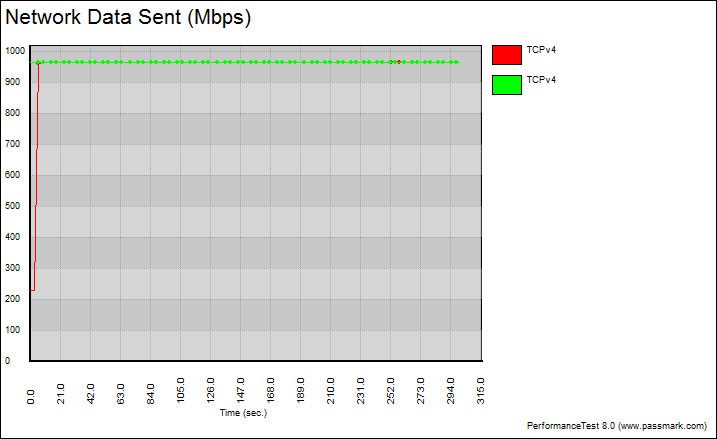
Teamed LAN – TCP Fixed and Variable Packet Sizes
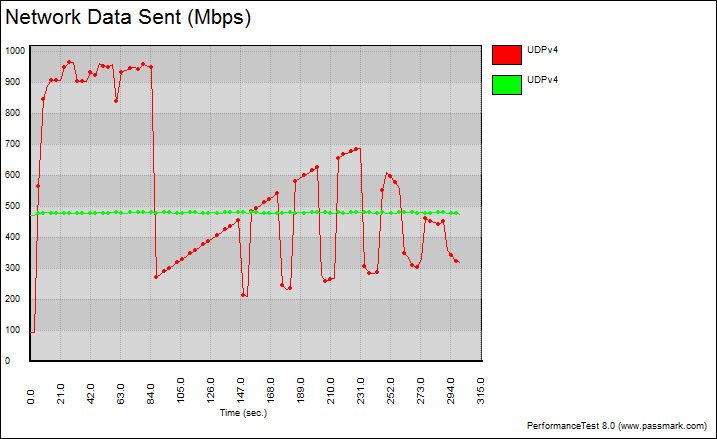
Teamed LAN – TCP Fixed and Variable Packet Sizes
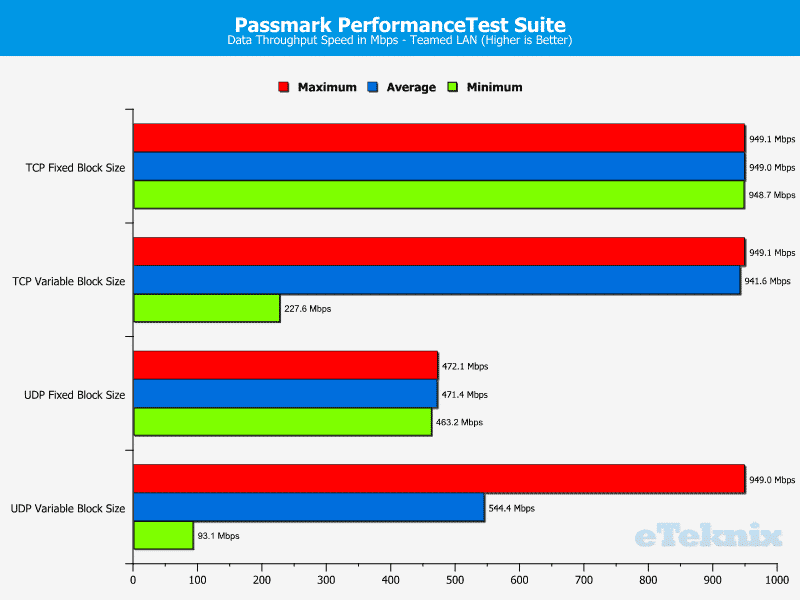
System Performance
We don’t use a dedicated graphics card in this system but rather just test the pure motherboard performance and due to that some tests can’t be run. They require a 3D capable graphics card and the onboard solution is merely a 2D solution meant for management. After all, this is a server board.
PassMark PerformanceTest 8.0
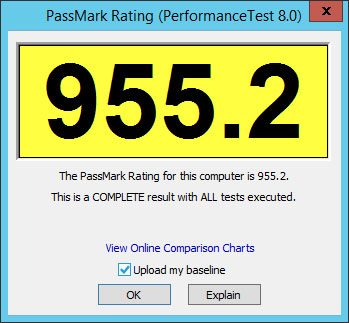
SPECwpc 1.2
SPECwpc is the first benchmark to measure all key aspects of workstation performance based on diverse professional applications. The latest version is SPECwpc V1.2 (introduced on June 3, 2015), which extends performance measurement from physical to virtualized workstations. Results from SPECwpc V1.2 are comparable to those from SPEC V1.0.4, but not to any version before that.
More than 30 workloads are included in SPECwpc V1.2 to test CPU, graphics, I/O and memory bandwidth. The tests are divided into the application categories listed below. Individual scores are generated for each test and a composite score for each category is generated based on a reference machine, yielding a “bigger is better” result. The reference machine has the following configuration: x3430 processor, 8GB (4x2GB) memory, V4800 graphics, and SATA 7.2k rpm hard disk drive.
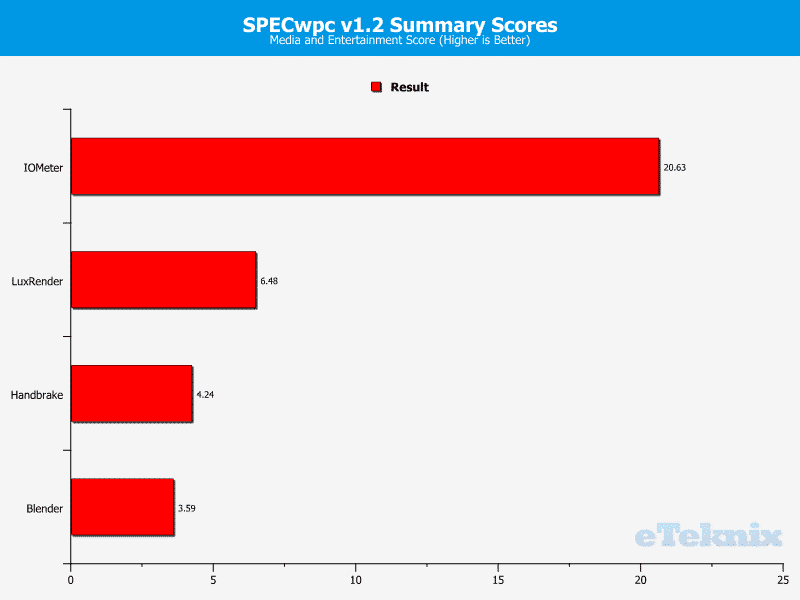
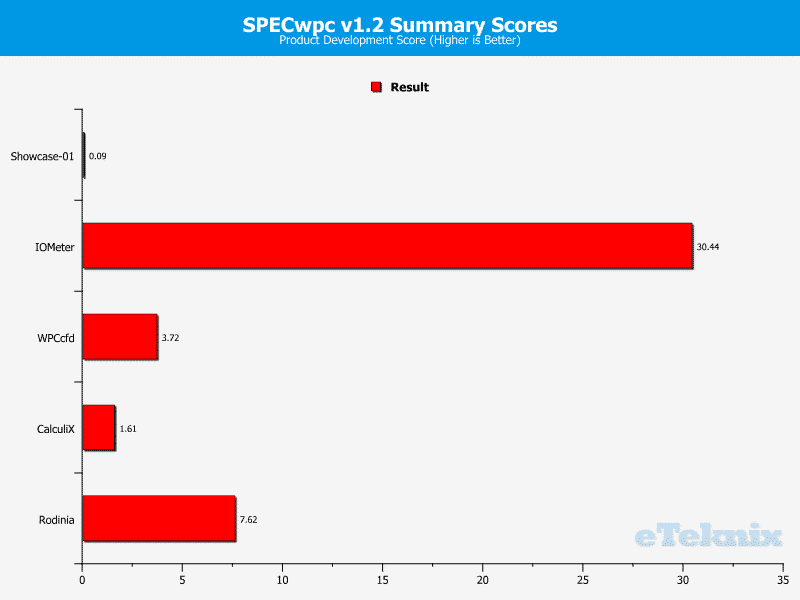
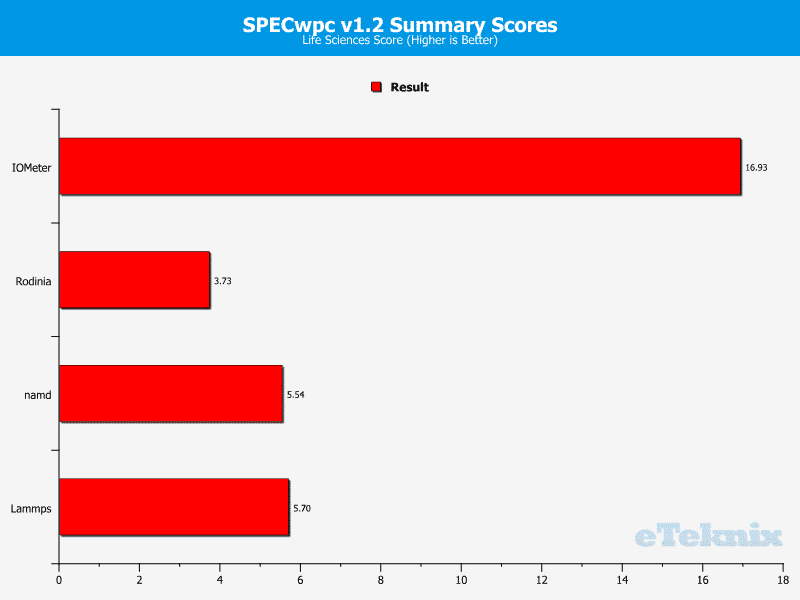
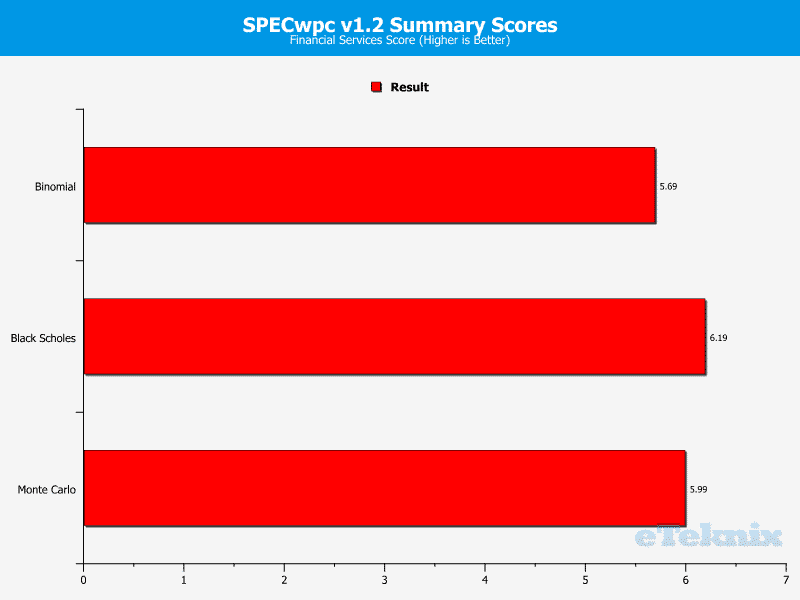
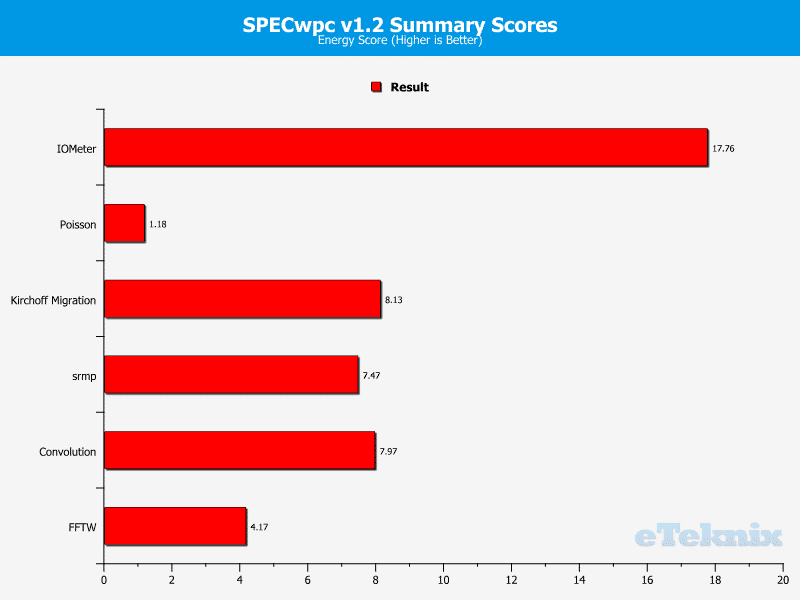
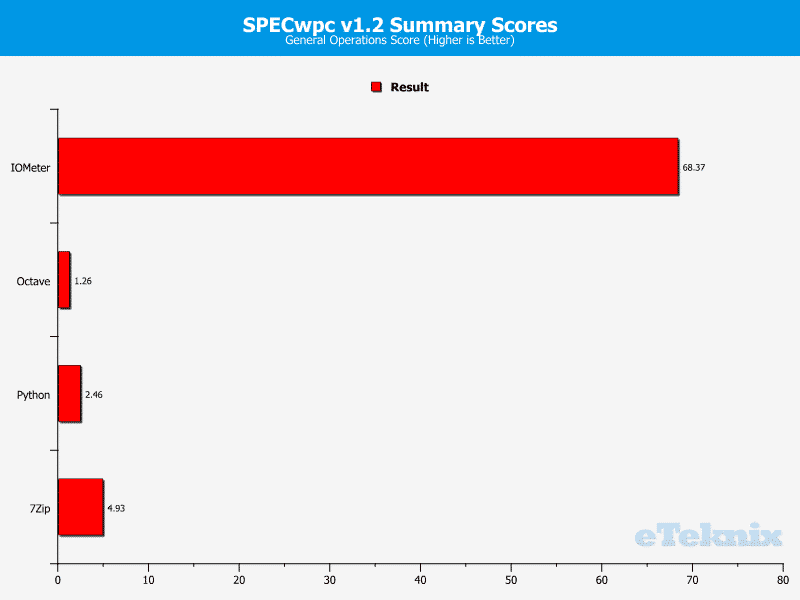
Power Consumption
The power consumption is measured at the power outlet and is as such the power draw from the entire system. Idle and off figures speak for themselves and for the load figures I stress both the CPU and memory to 100% load with OCCT.
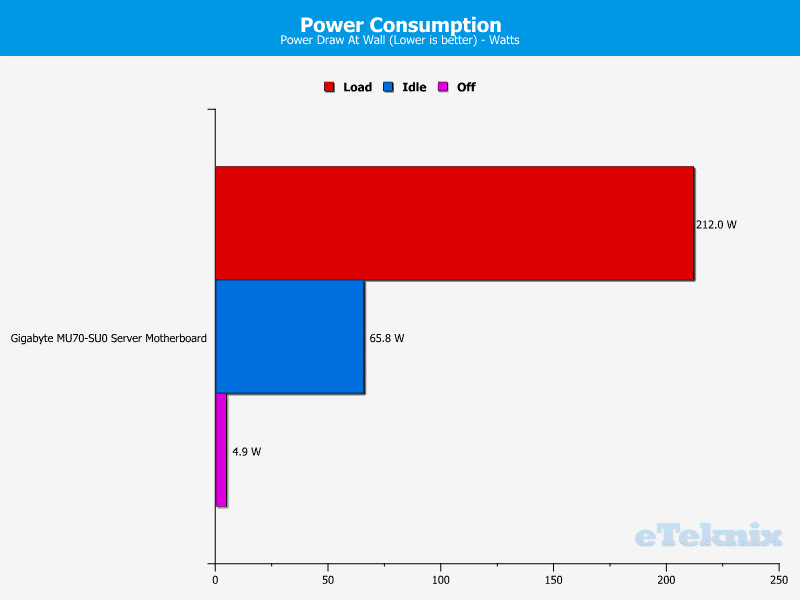
Final Thoughts & Pricing
Pricing
The Gigabyte MU70-SU0 might be a server motherboard that packs a lot of features, but it doesn’t cost as much as one might expect. You can find the board at NewEgg for $349.99, at ServerCase UK for £271.80, or find a good deal in Germany through Geizhals where it starts at €352.66 at the time of writing.
Overview
Gigabyte has a strong server lineup and the MU70-SUO surely deserves to be among them. You get a motherboard with great features, upgrade abilities; and best of all, you get it for a fair price.
There are a lot of connection options here. You get 8 normal SATA3 ports and one SATA3 DOM port that can deliver independent power without extra connections. There’s also an mSATA slot for extra storage drives as well as a type-A USB 3.0 onboard header for diagnostic, backup, or systems running from USB.
With two x16 Gen3 PCIe expansion slots and another x8 and x4, it allows you to upgrade with a lot of extra features, might they be FirePro or Quadro cards, NVMe storage drives, or extra controllers. There’s plenty of bandwidth for it all. The PCIe x4 mezzanine card slot allows you to add an optional LAN card with two 10GbE SFP+ ports directly to the motherboard.
While we don’t have anything to compare it with yet, the motherboard performed very well and produces some great results for both the memory and CPU tests. If you’re comparing these results to those from other people, make sure that they aren’t running a GPU on the system as that will have a big impact on the scores. Our results are purely from the motherboard alone.
You also get four GbE RJ45 LAN ports, all running on their own Intel 210i chip. The Aspeed AST2400 Controller allows you to remotely connect and manage the server, even when it isn’t powered on. A great feature for any administrator. You can check on voltages, fans, and health or update the BIOS and settings, it’s all possible. This is a pretty common feature on server boards and is a must-have.
The thing that really makes this motherboard stand out is its memory capabilities. Not only is it a rare thing to find ATX boards with 12 DIMM slots, the Gigabyte MU70-SU0 is also able to run all of this memory at a maximum speed of up to 2133MHz. That is a unique feature and one that will make a world of difference for memory hungry applications. Just remember that the trade-off involves specific CPU cooler support.
Pros:
- 12 DIMM SLOTS
- Up to 768GB, 2133MHz, ECC, DDR4 memory
- Quadruple Intel-LAN
- Aspeed AST2400 based IPMI Remote management
- 10 SATA3 connections (8+1 SATA3, 1 mSATA)
- USB 3.0 Type-A onboard
- Upgradeable with two 10GbE ports
- Japanese Solid Capacitors
Cons:
- No SAS controller
“The Gigabyte MU70-SU0 is a relative small board for its capabilities and a great base for any memory eating server use.”

Gigabyte MU70-SU0 Server Motherboard Review
Thank you Gigabyte for providing us with this review sample



















